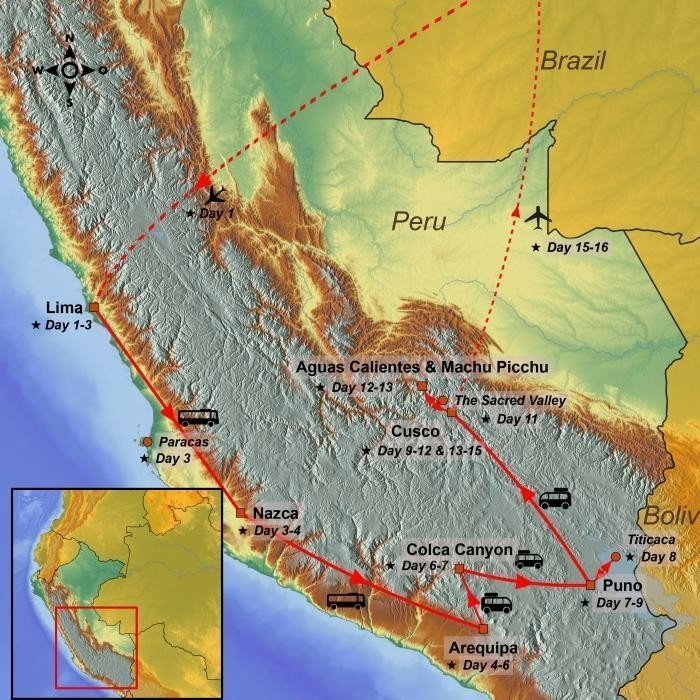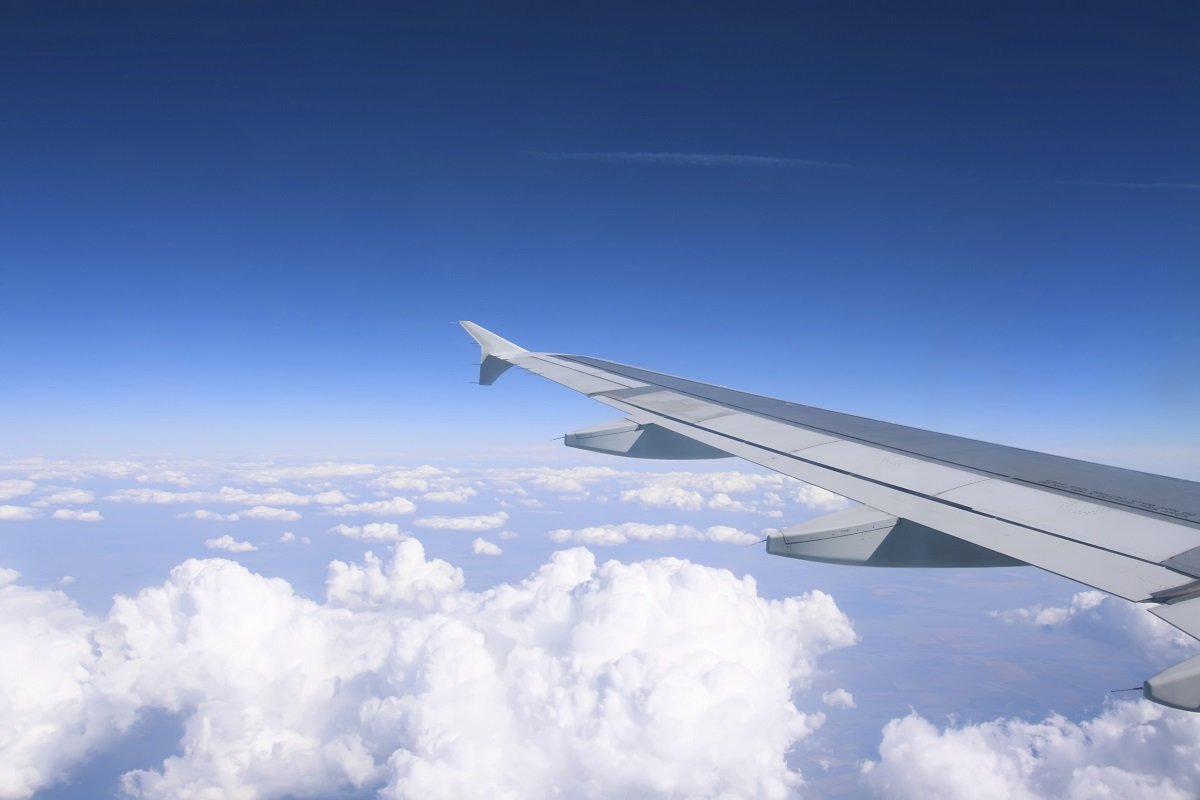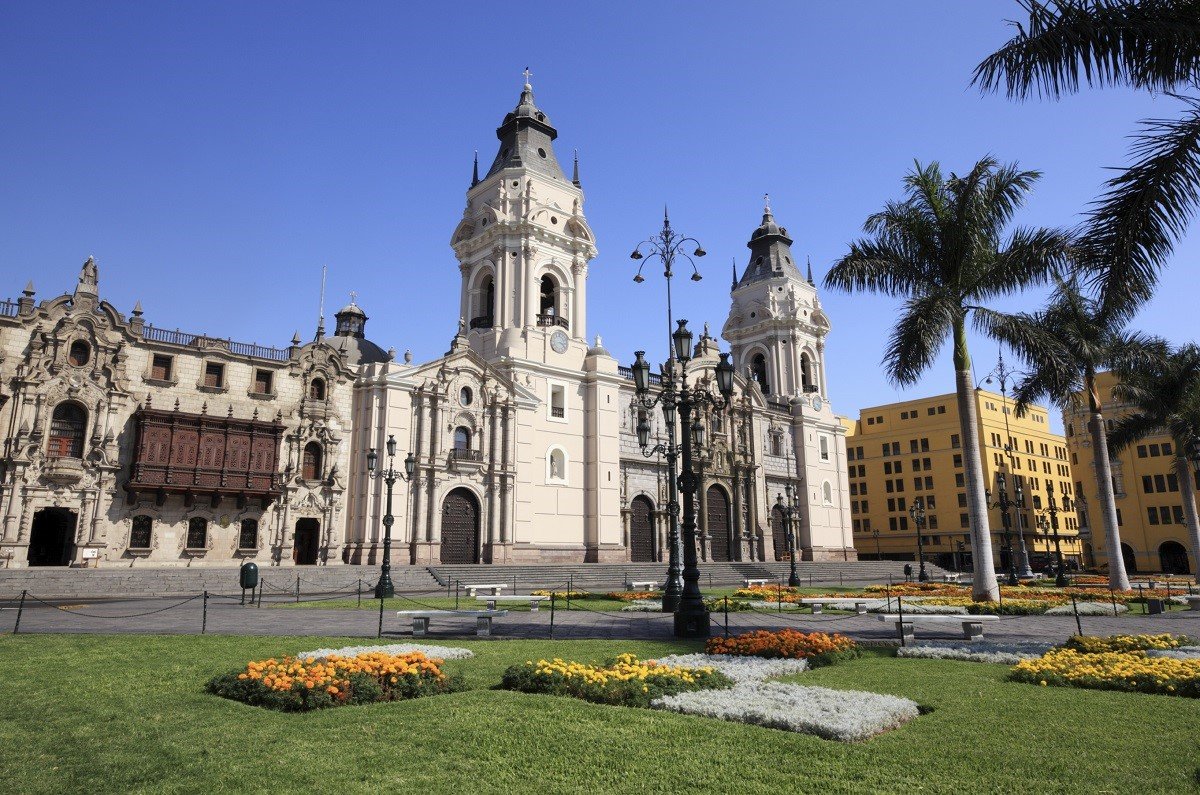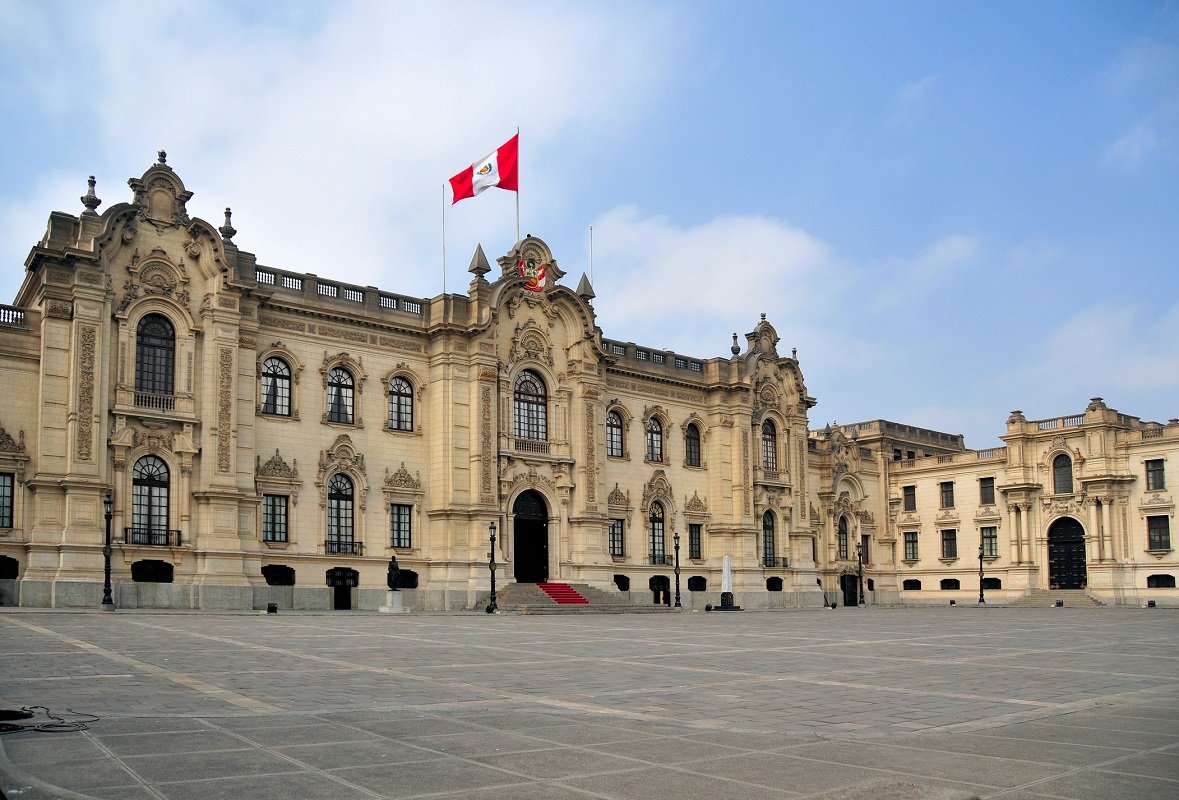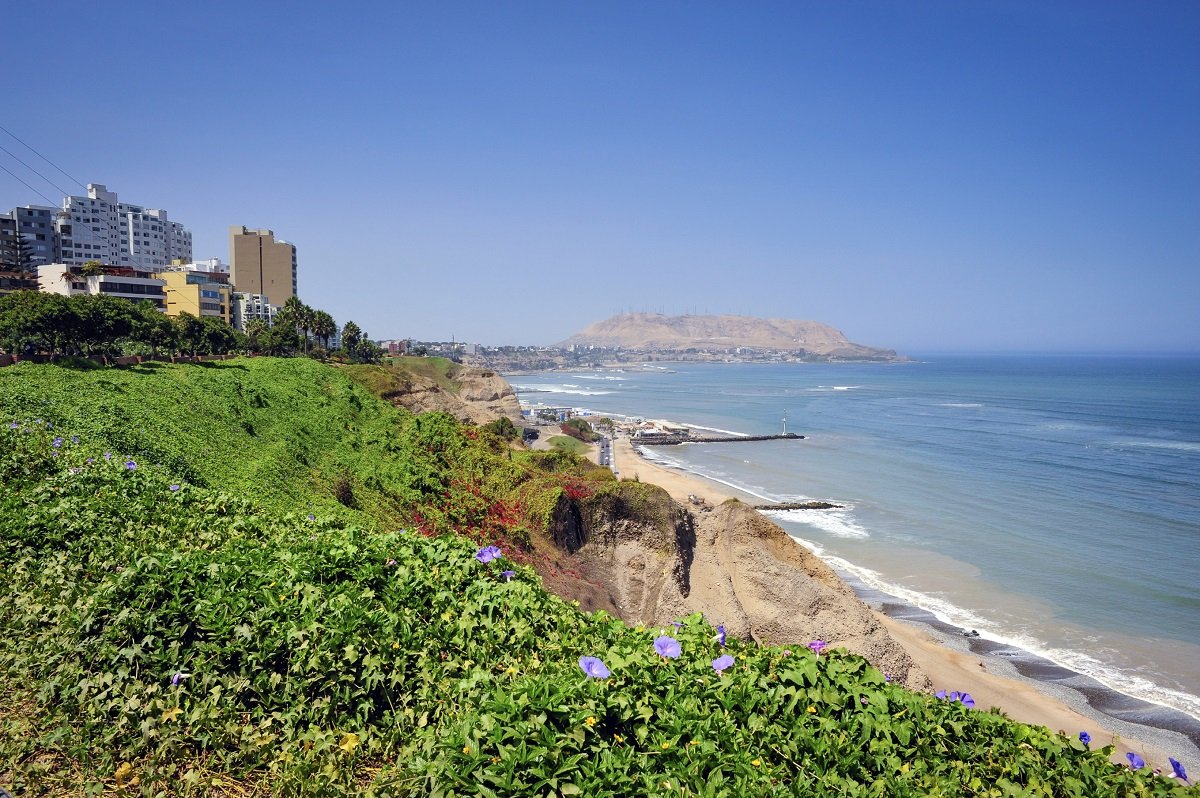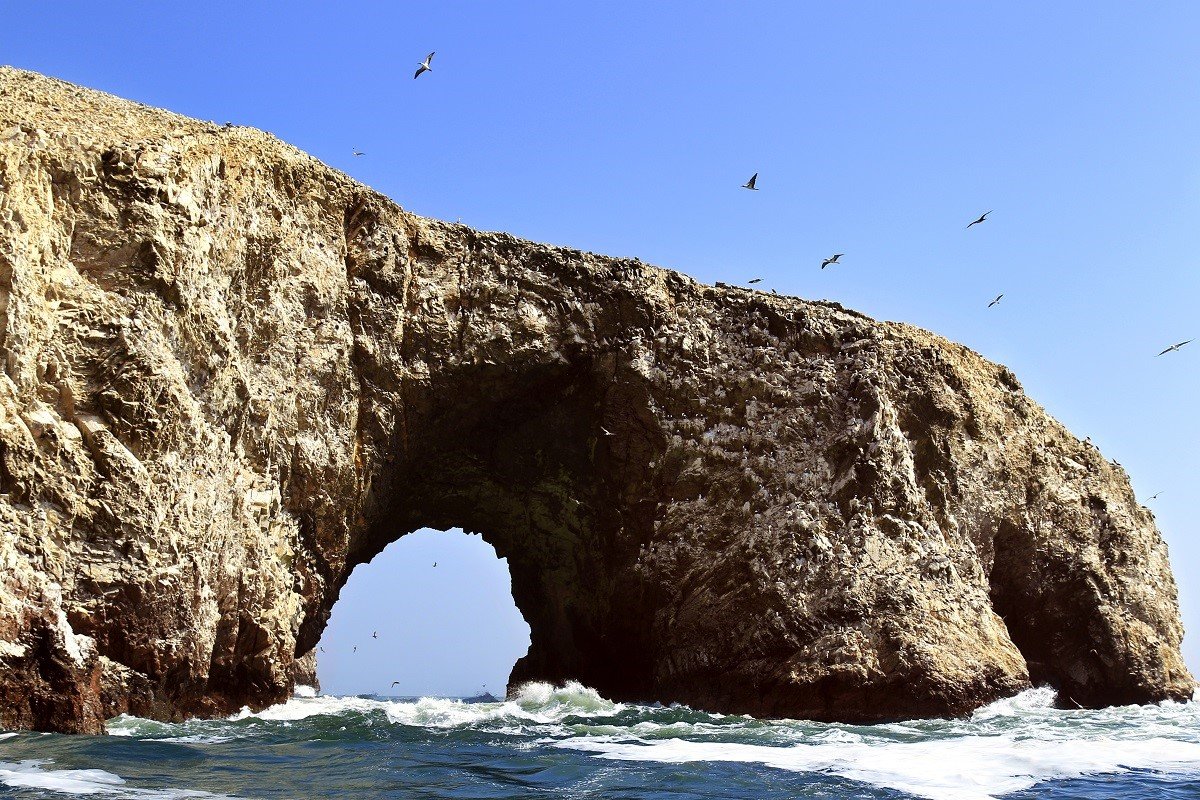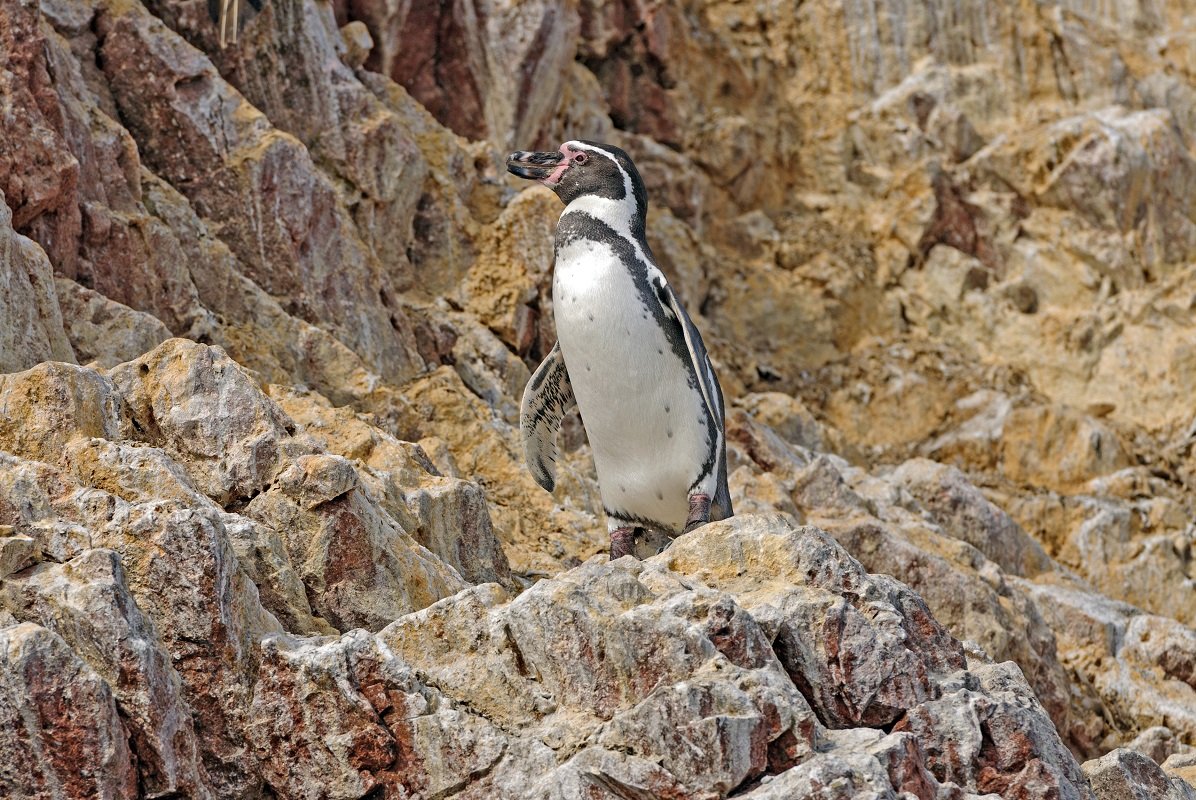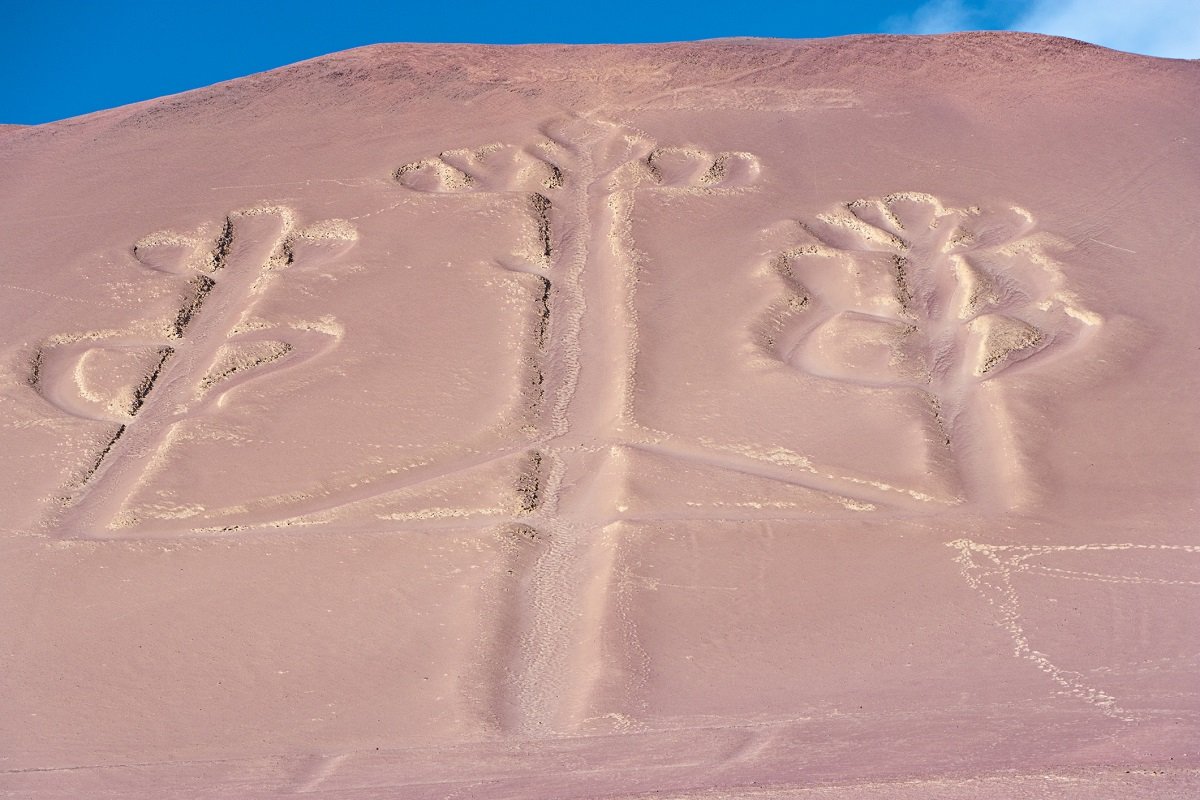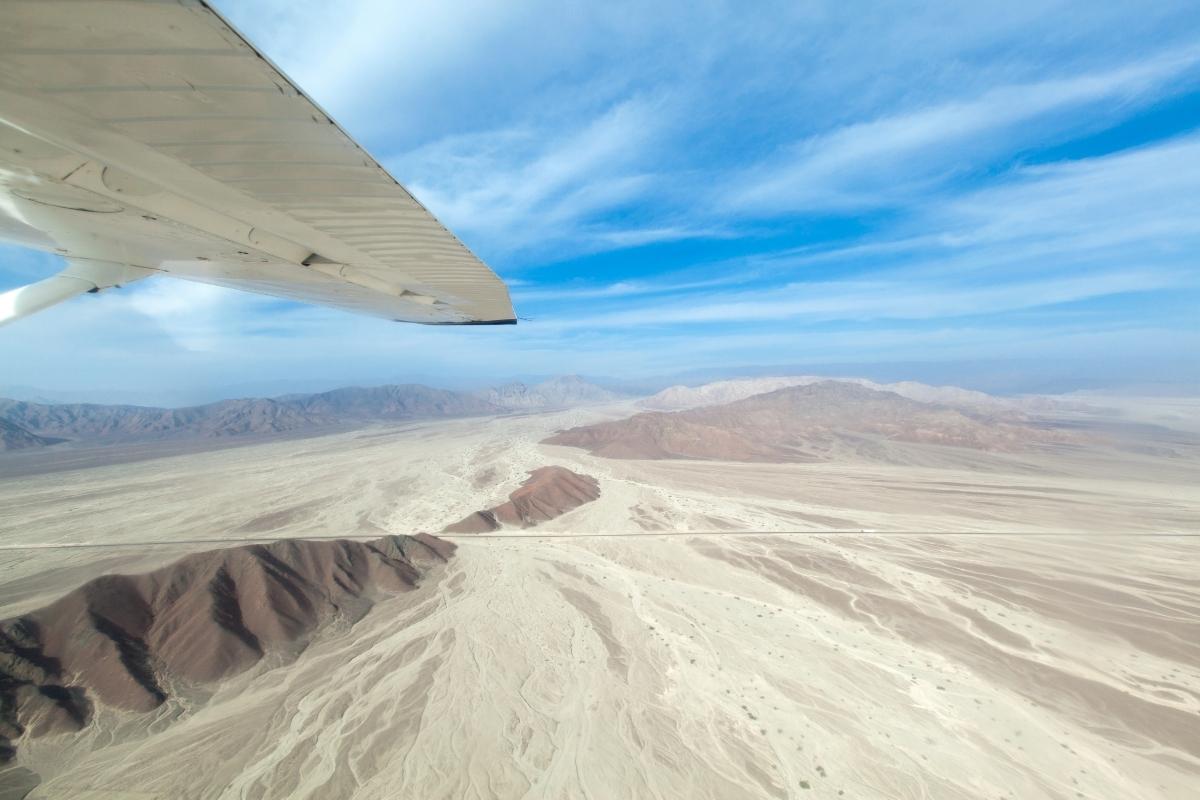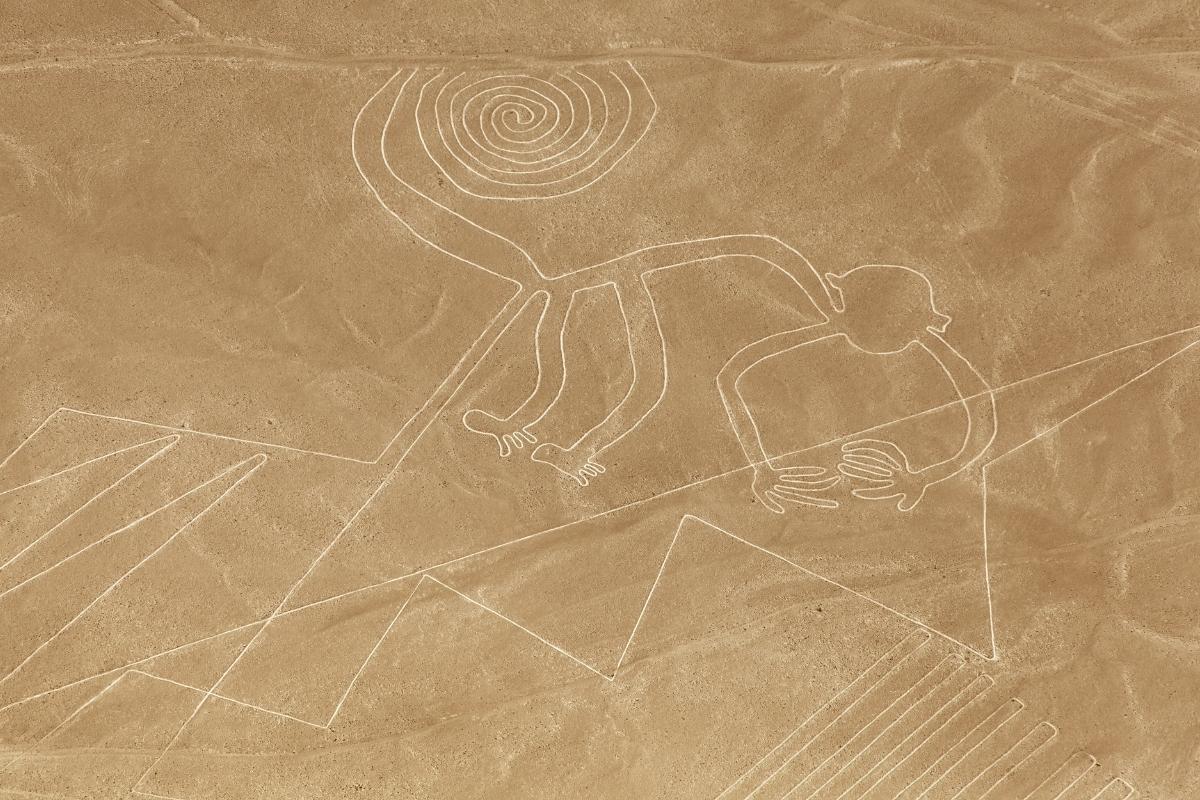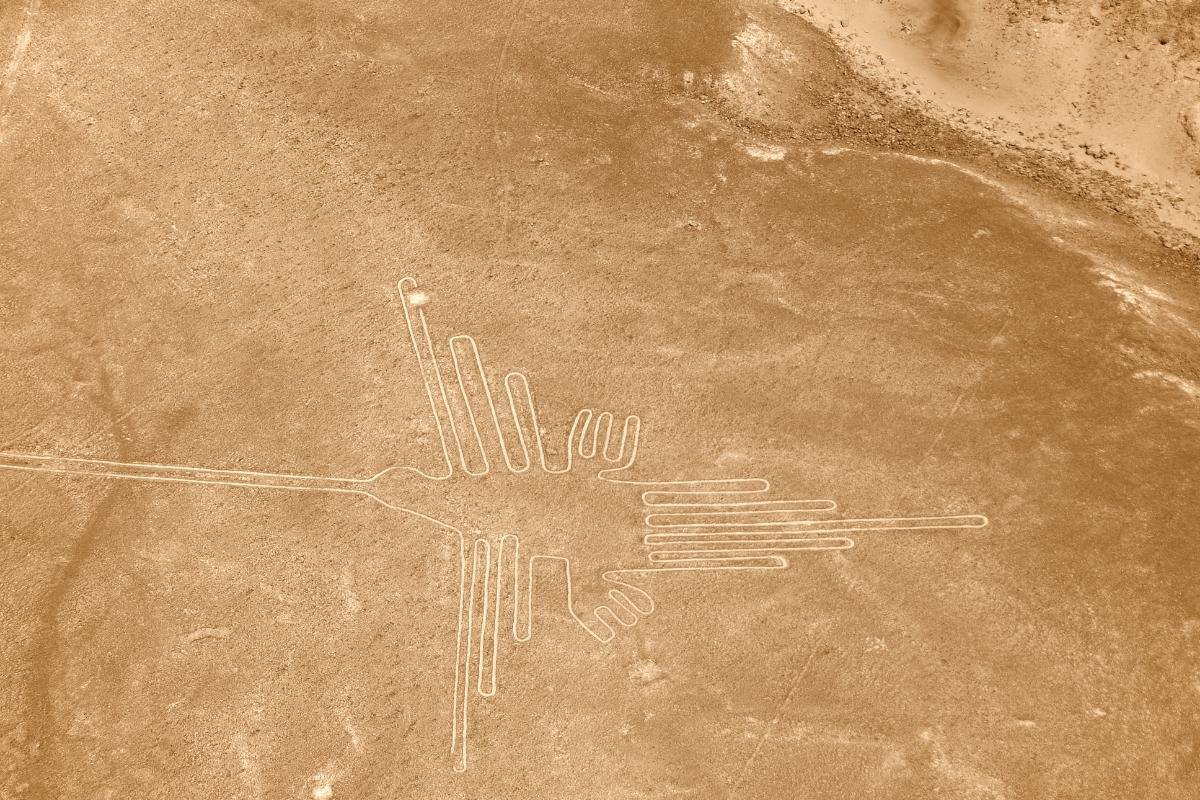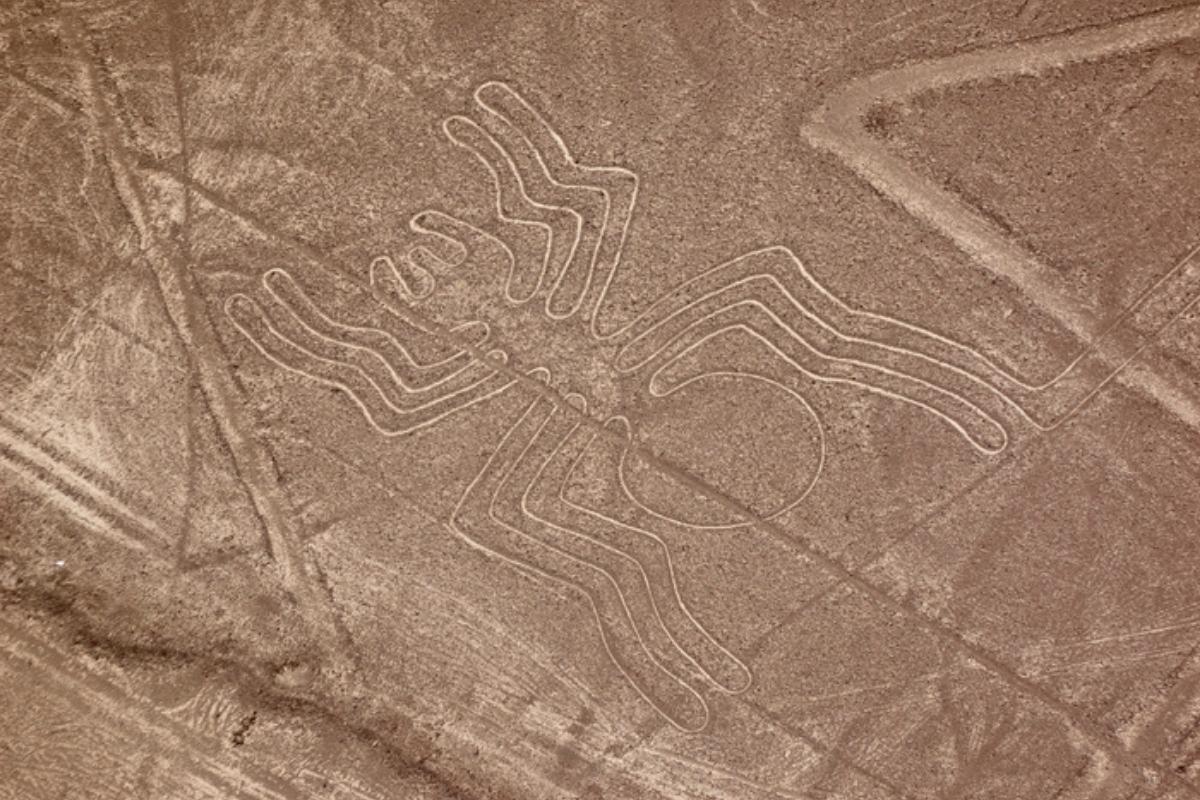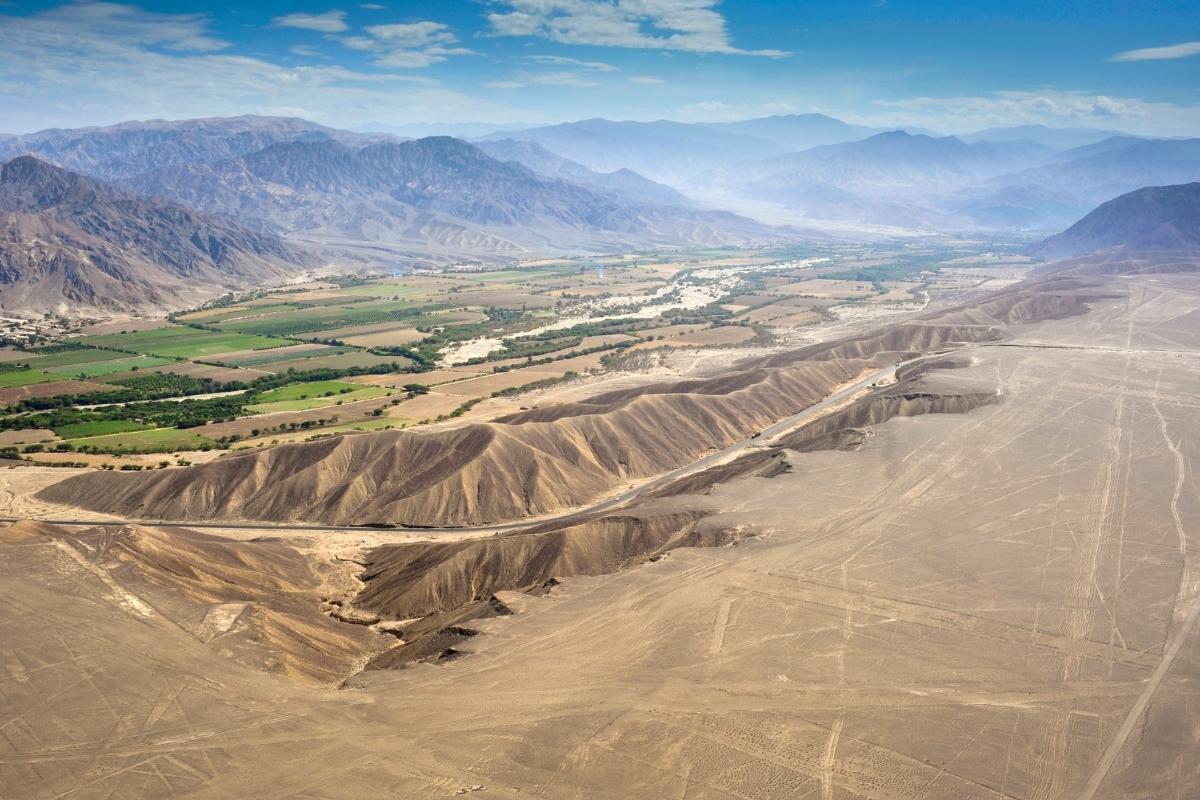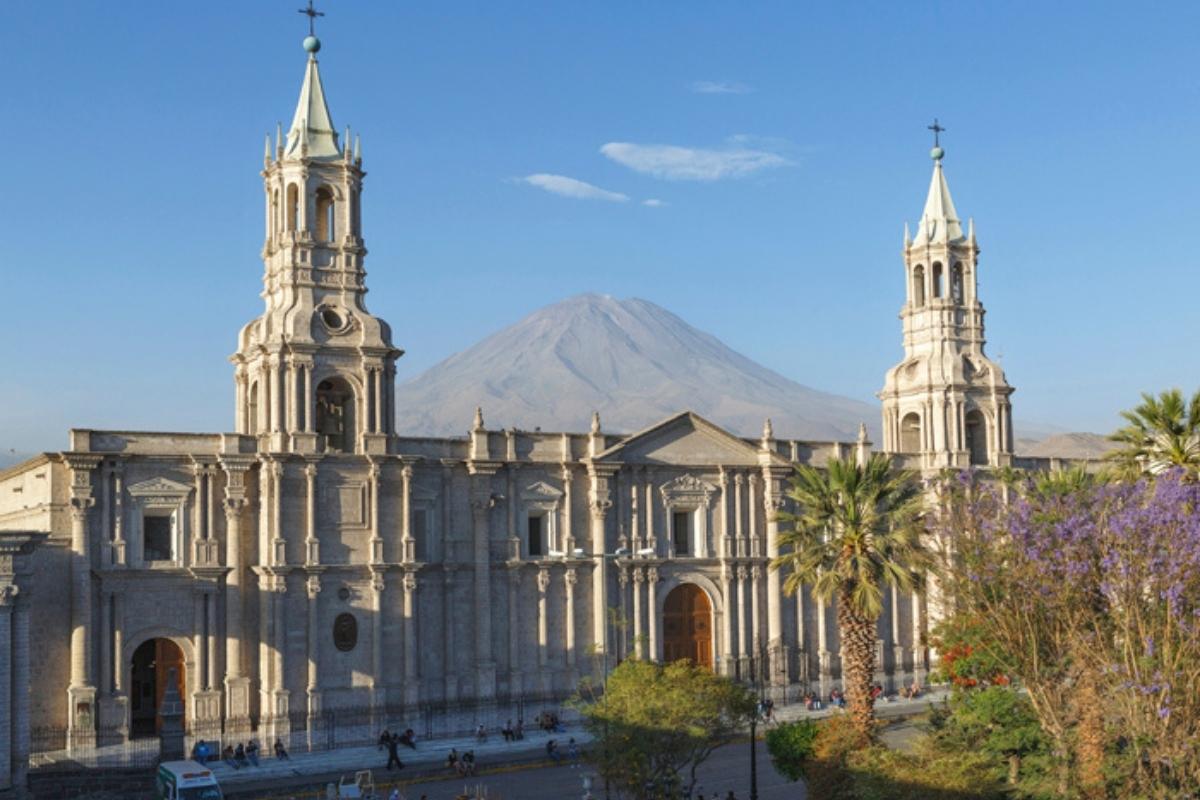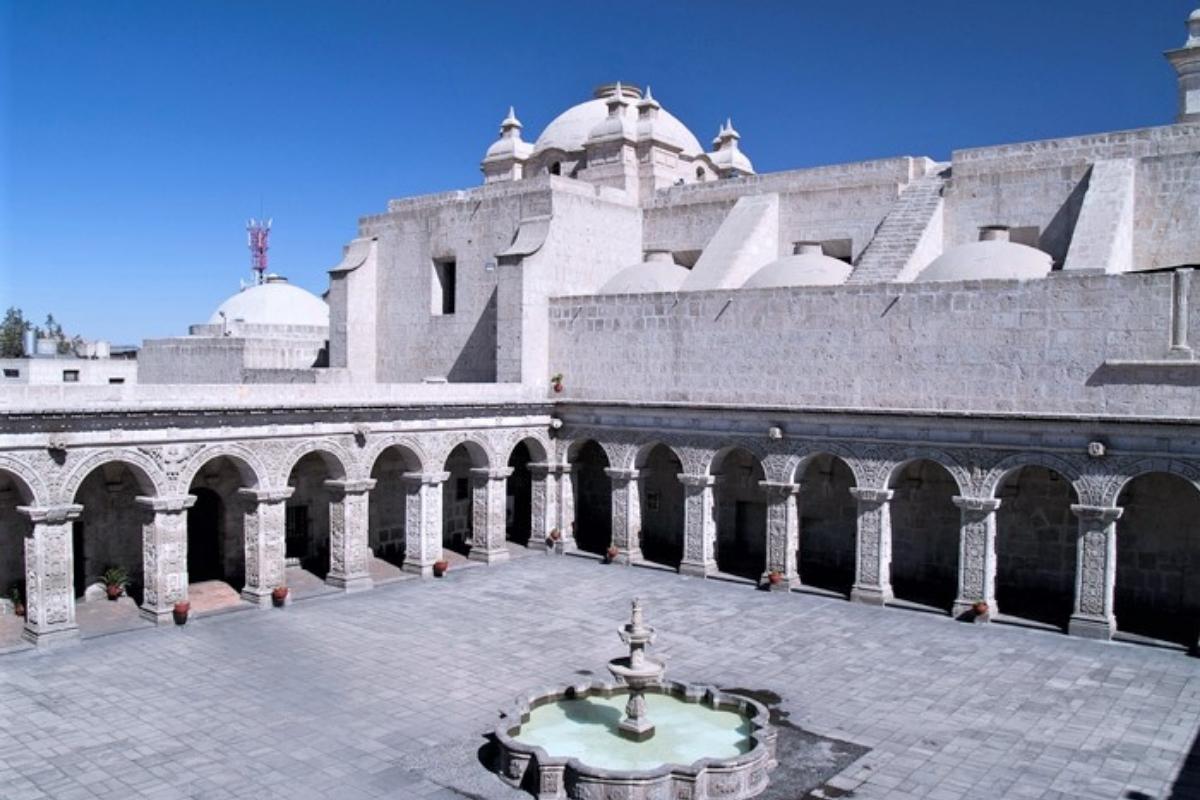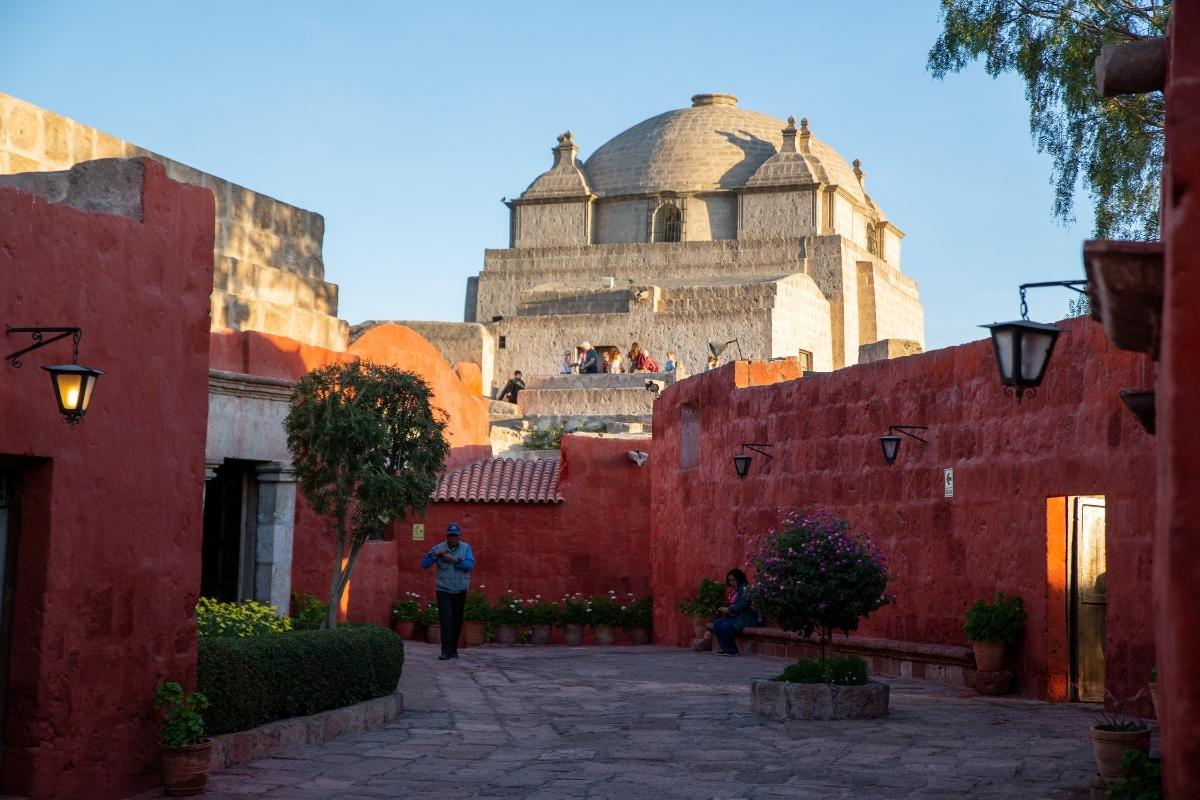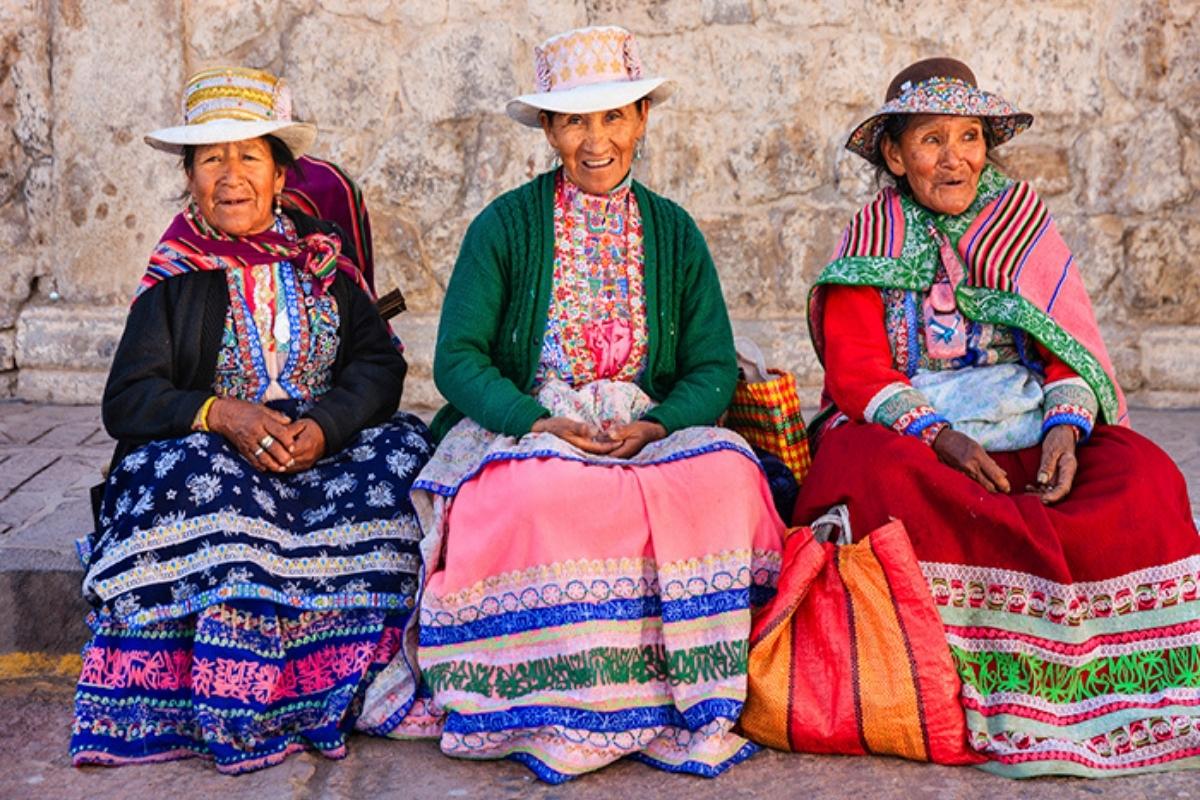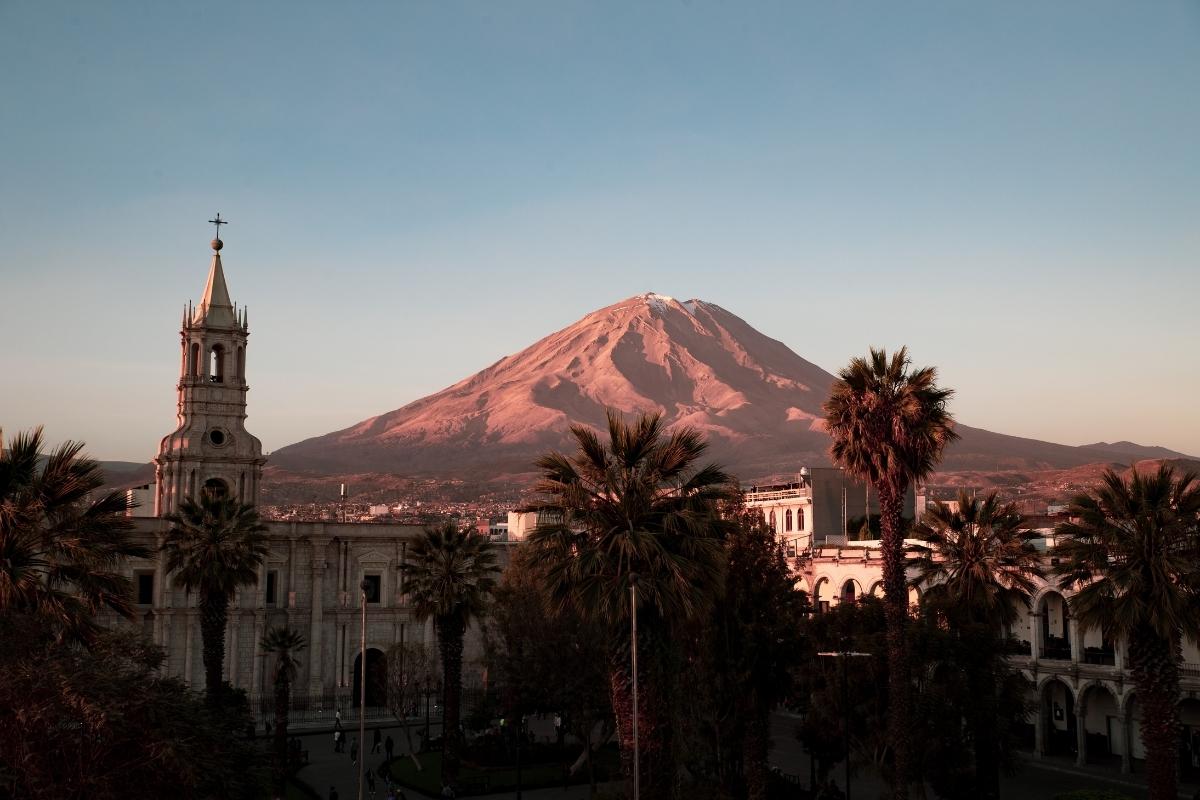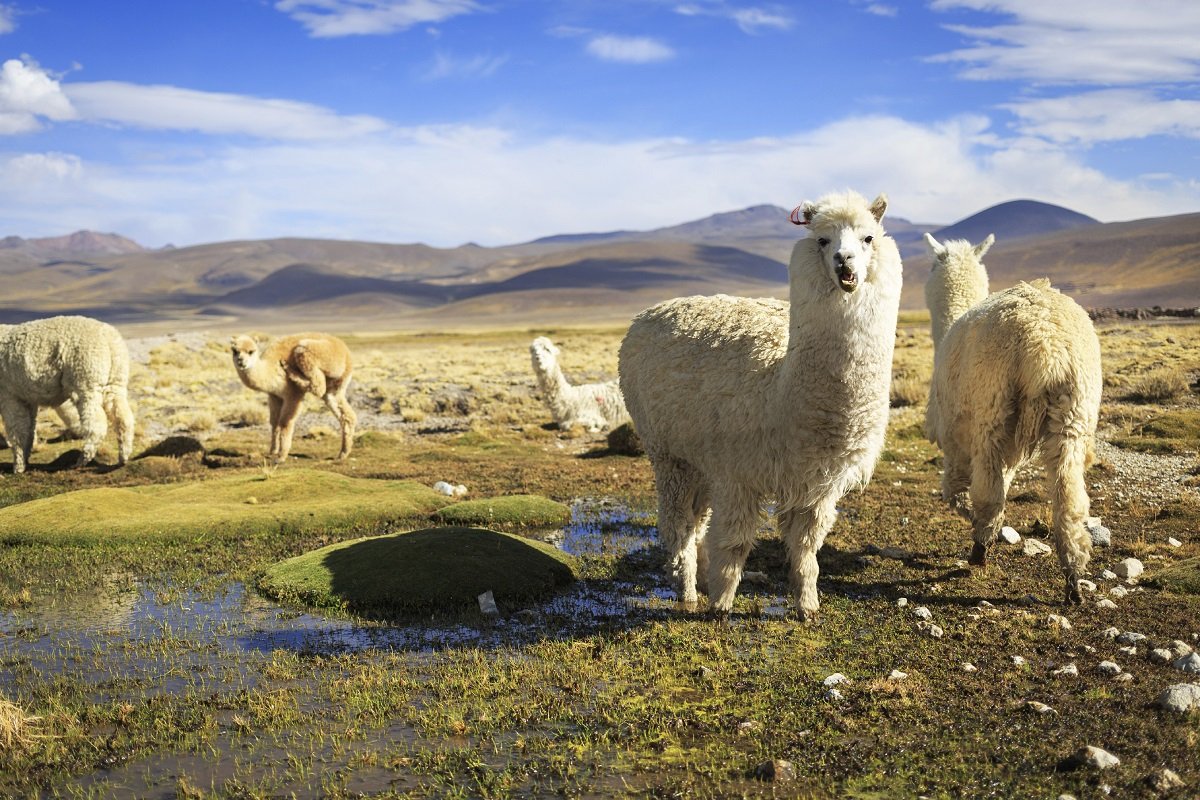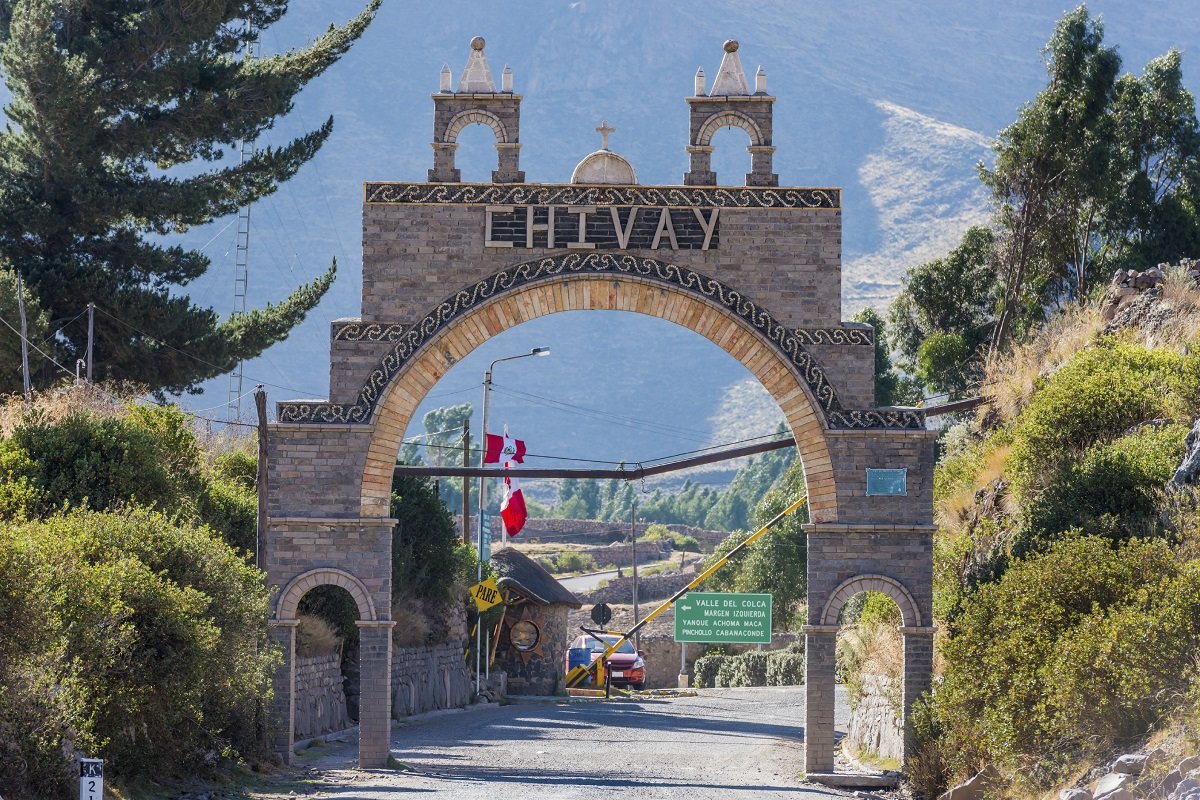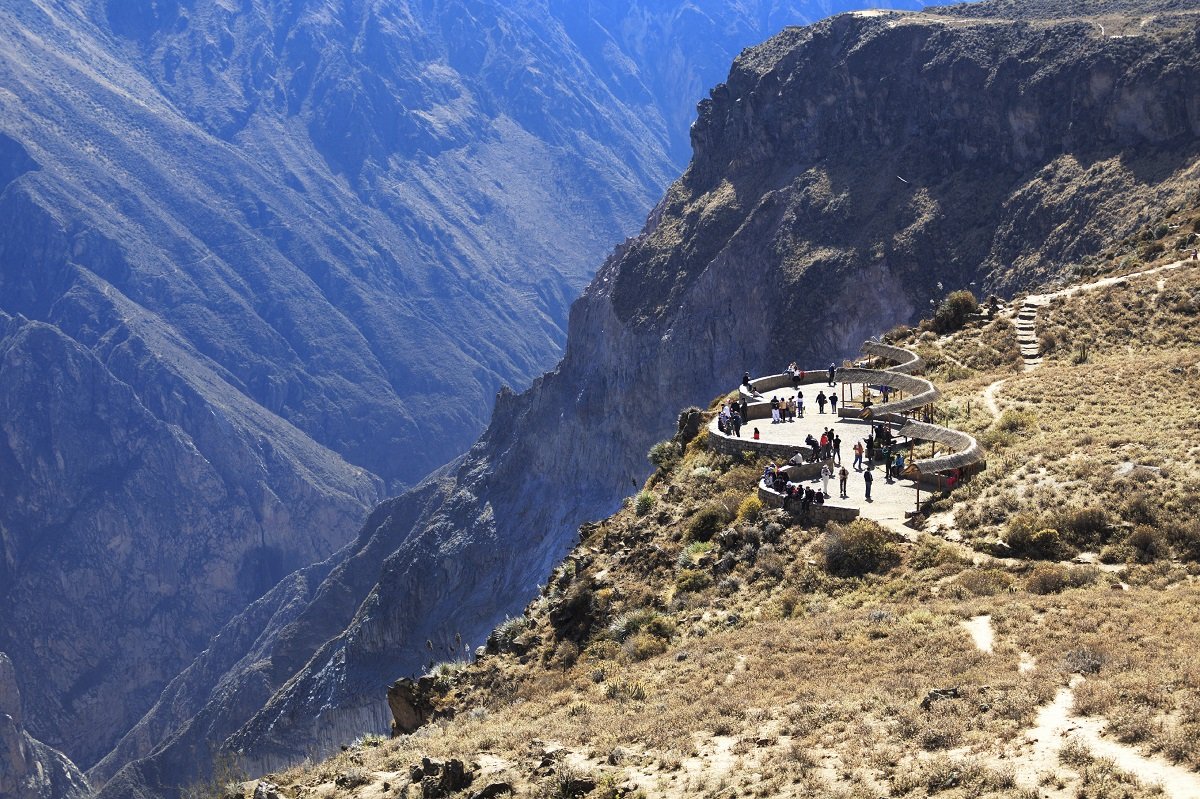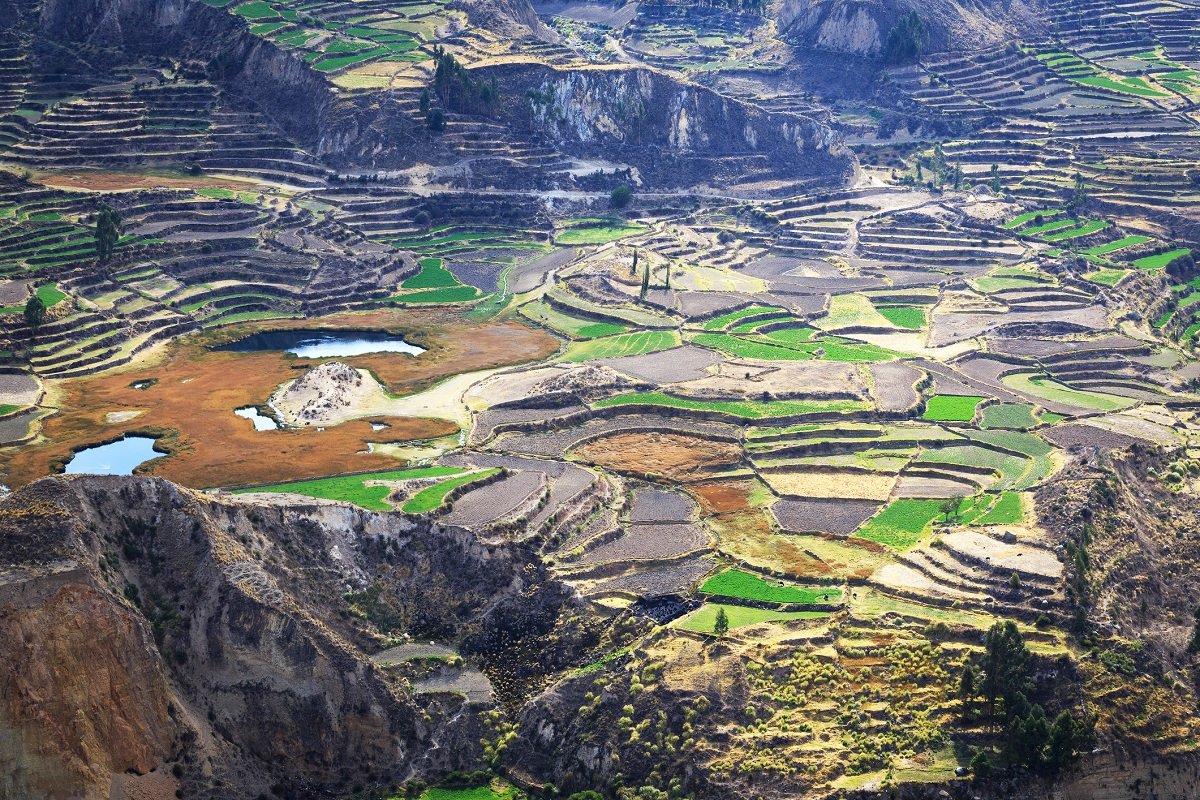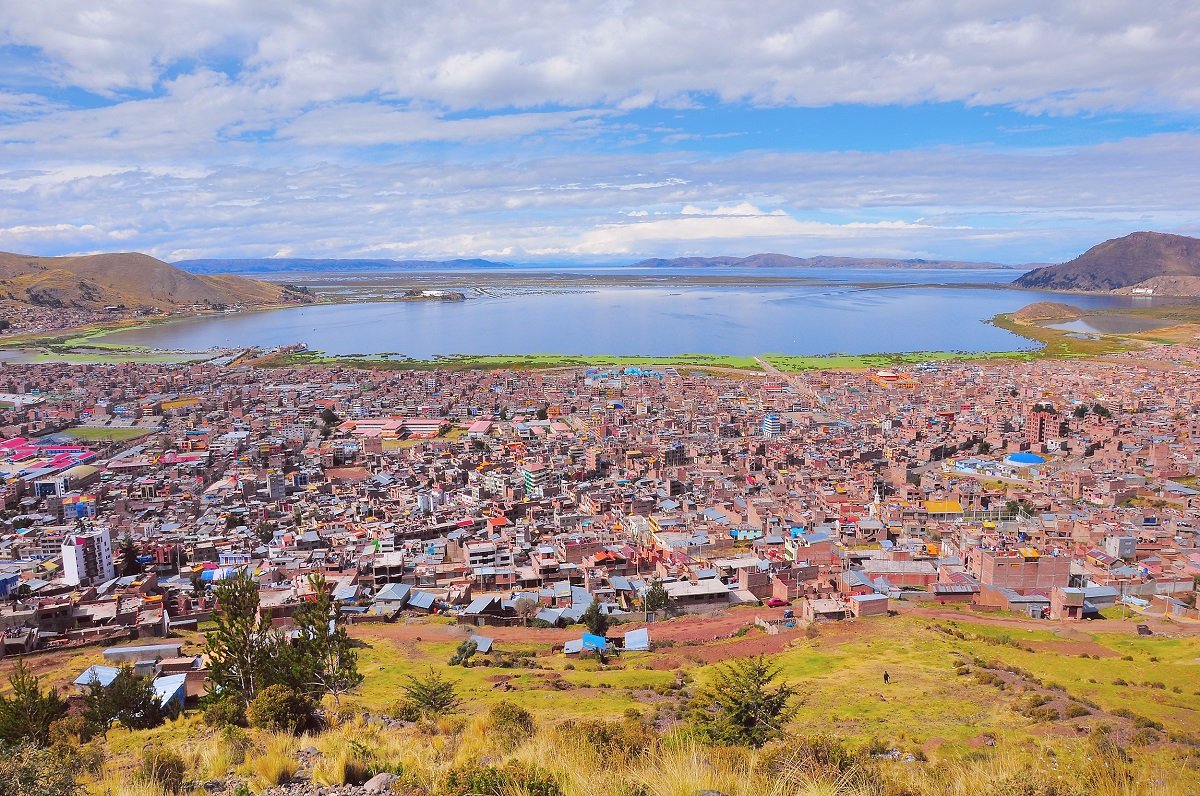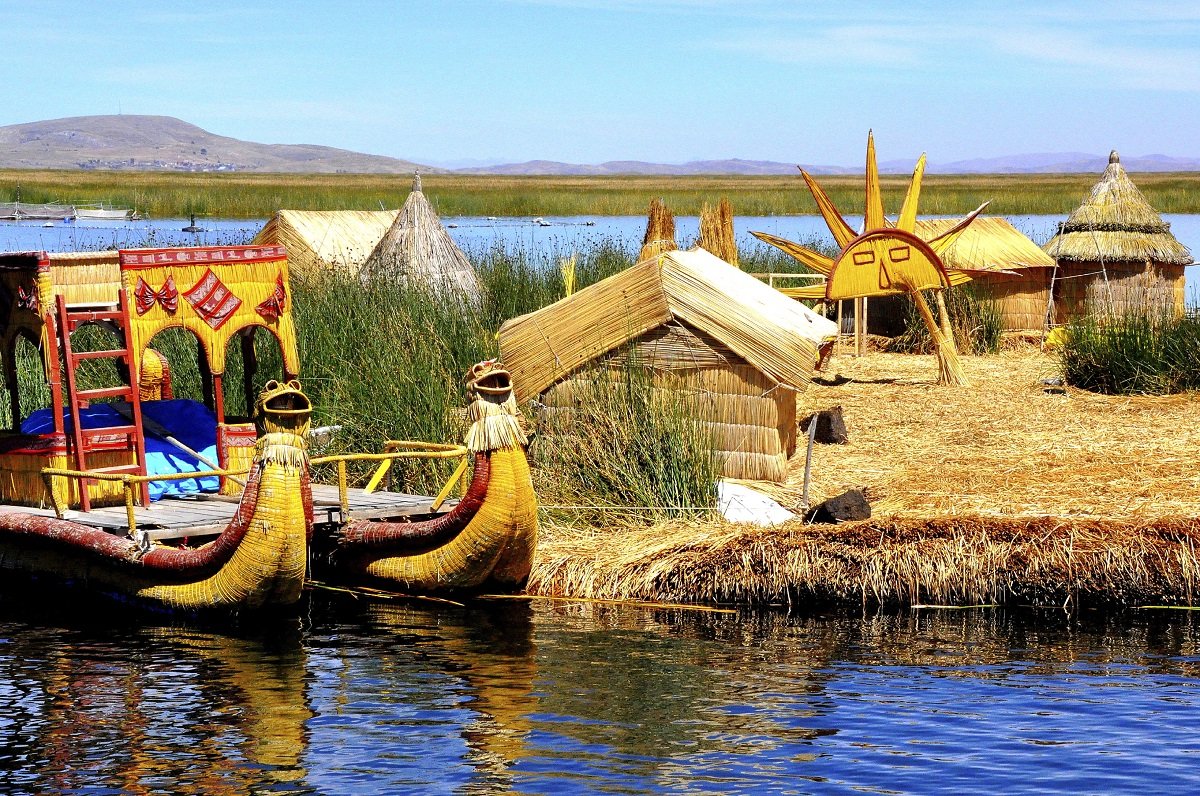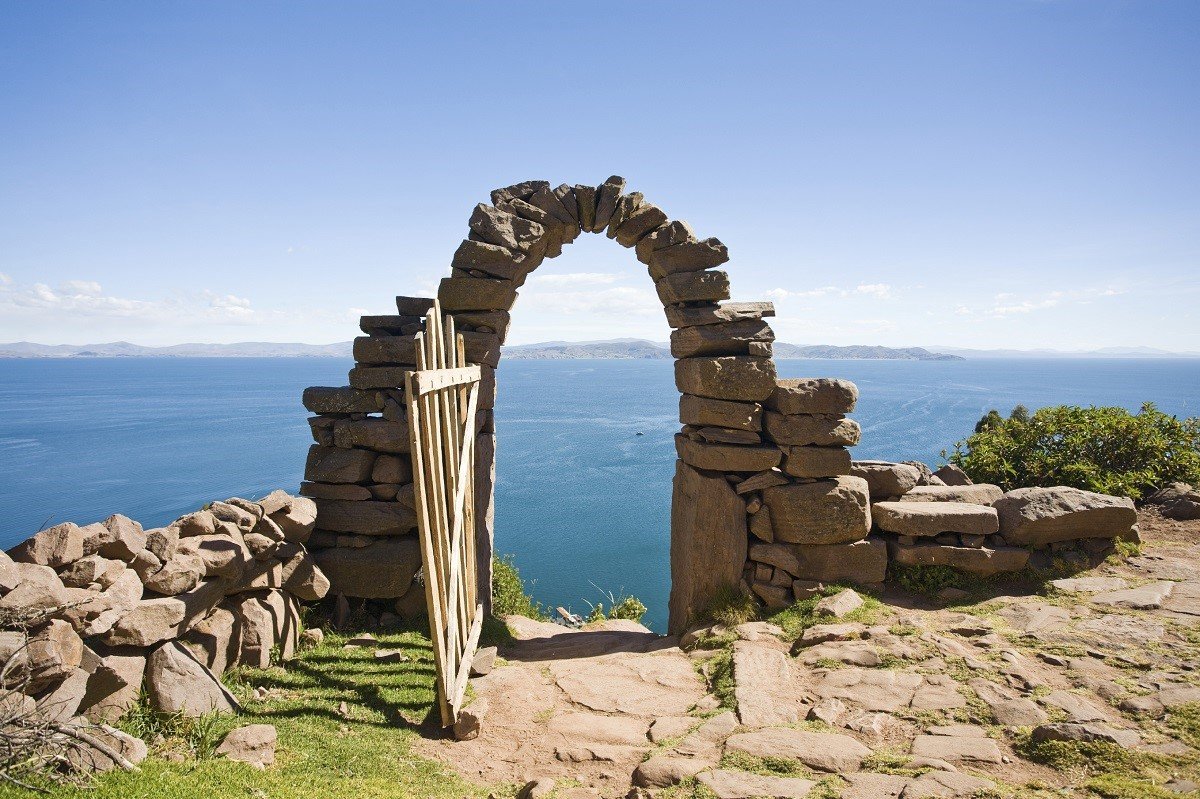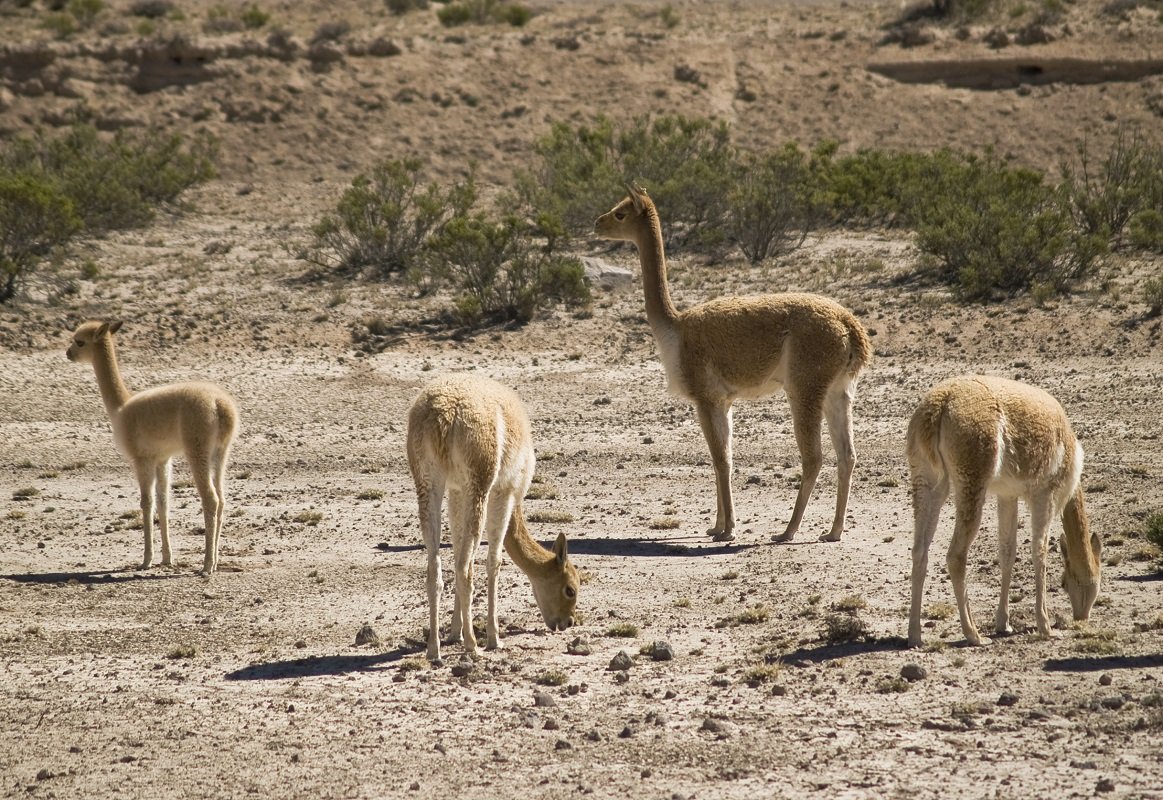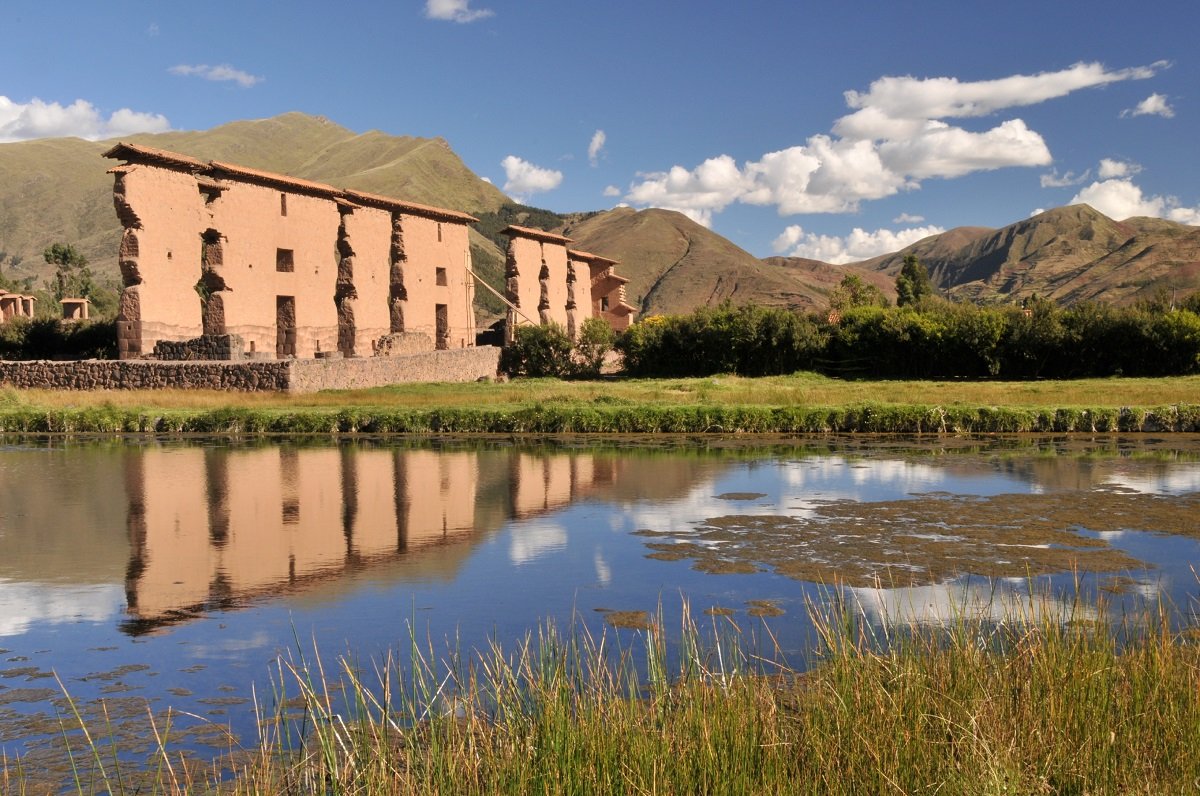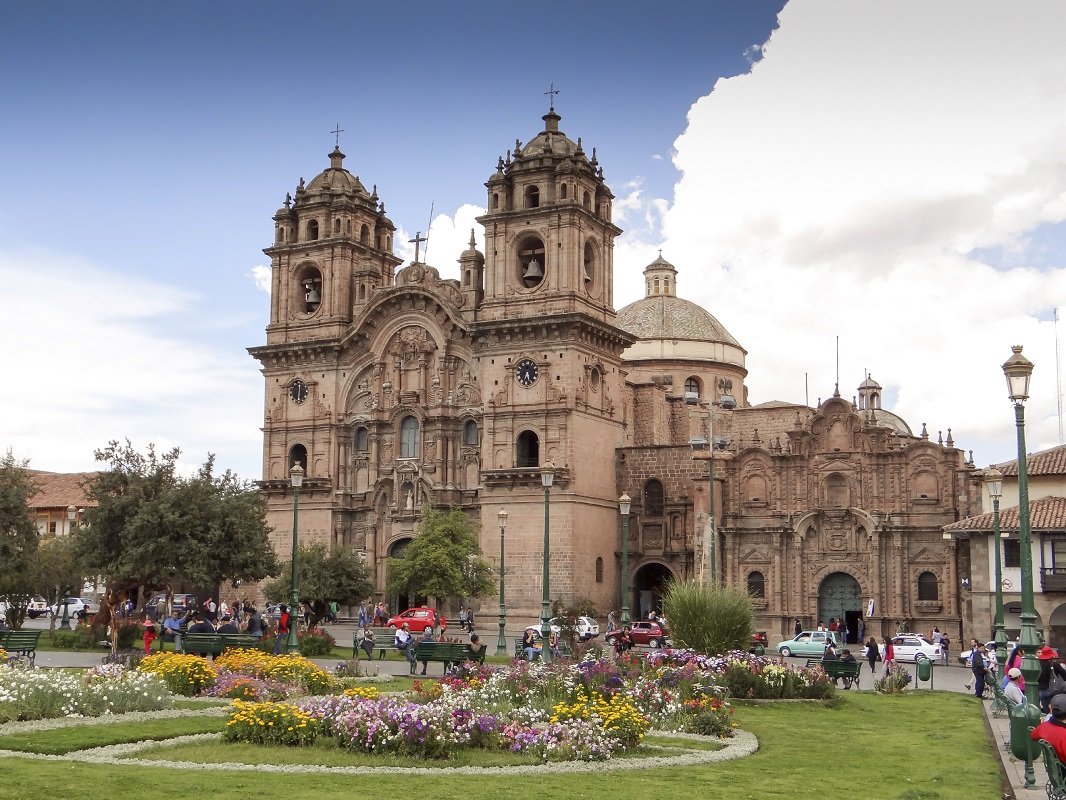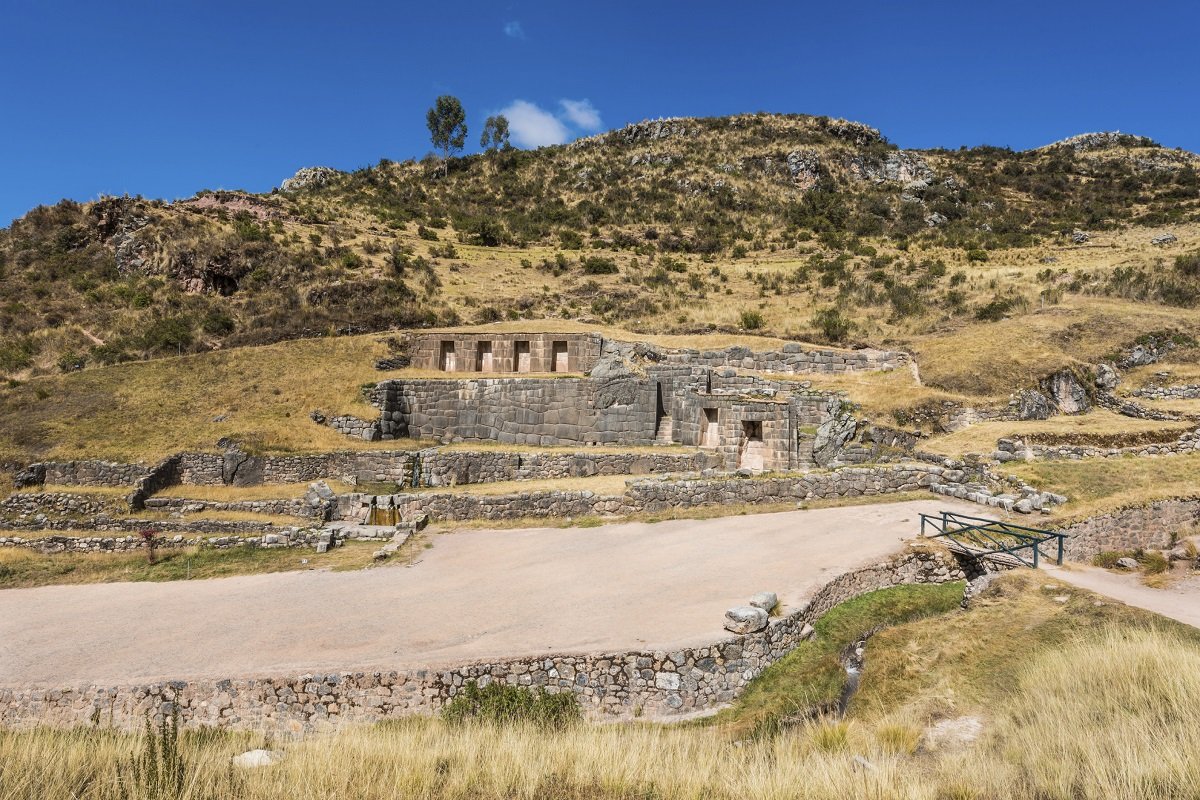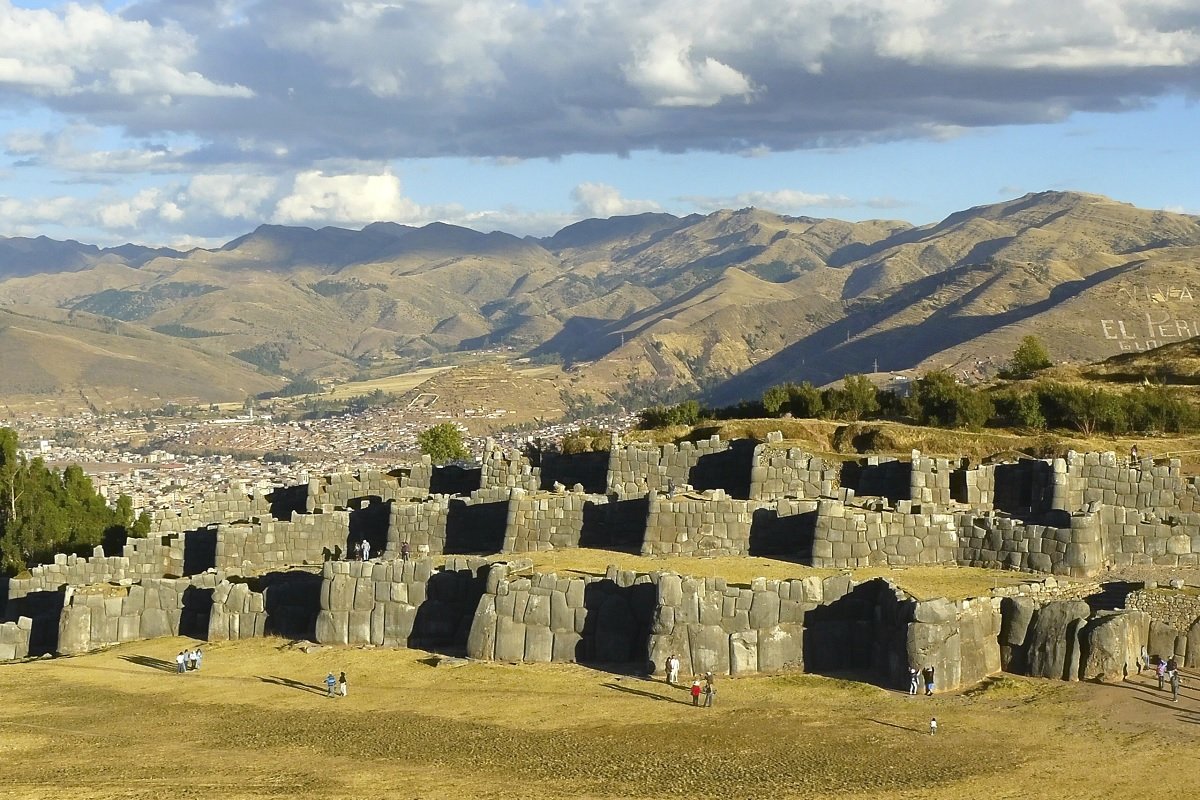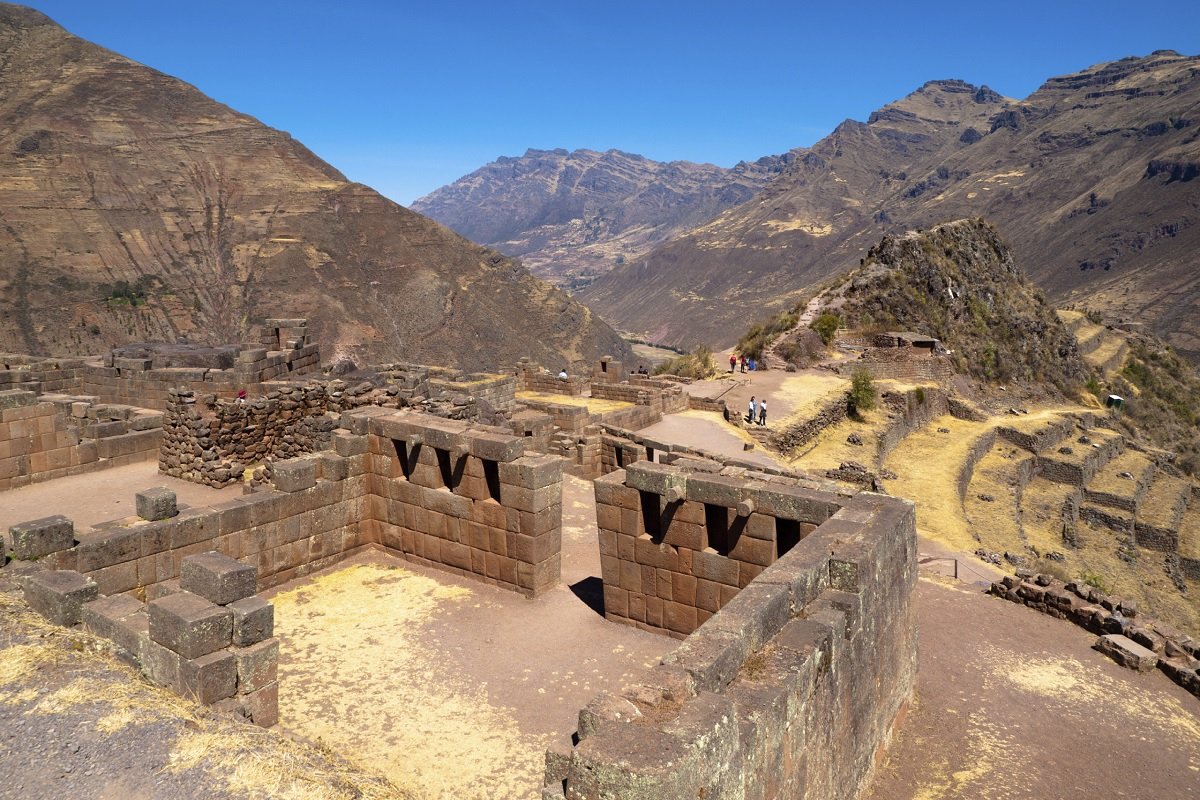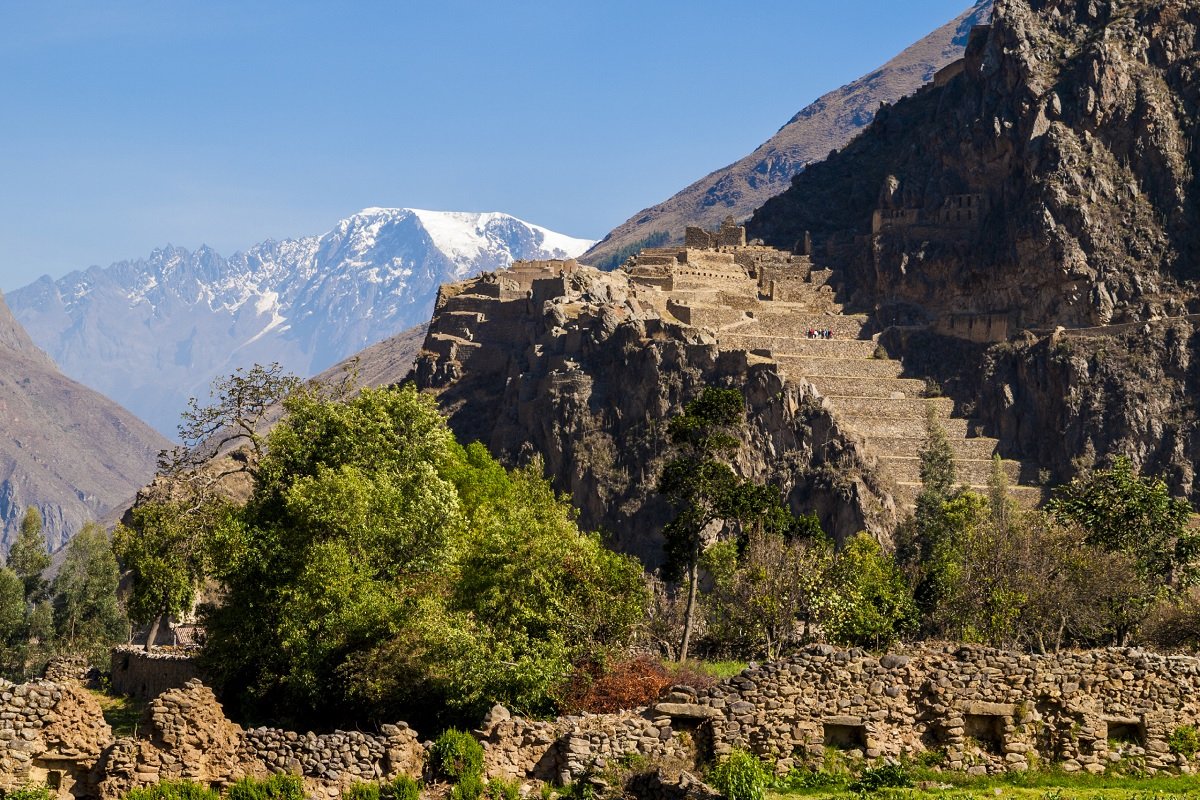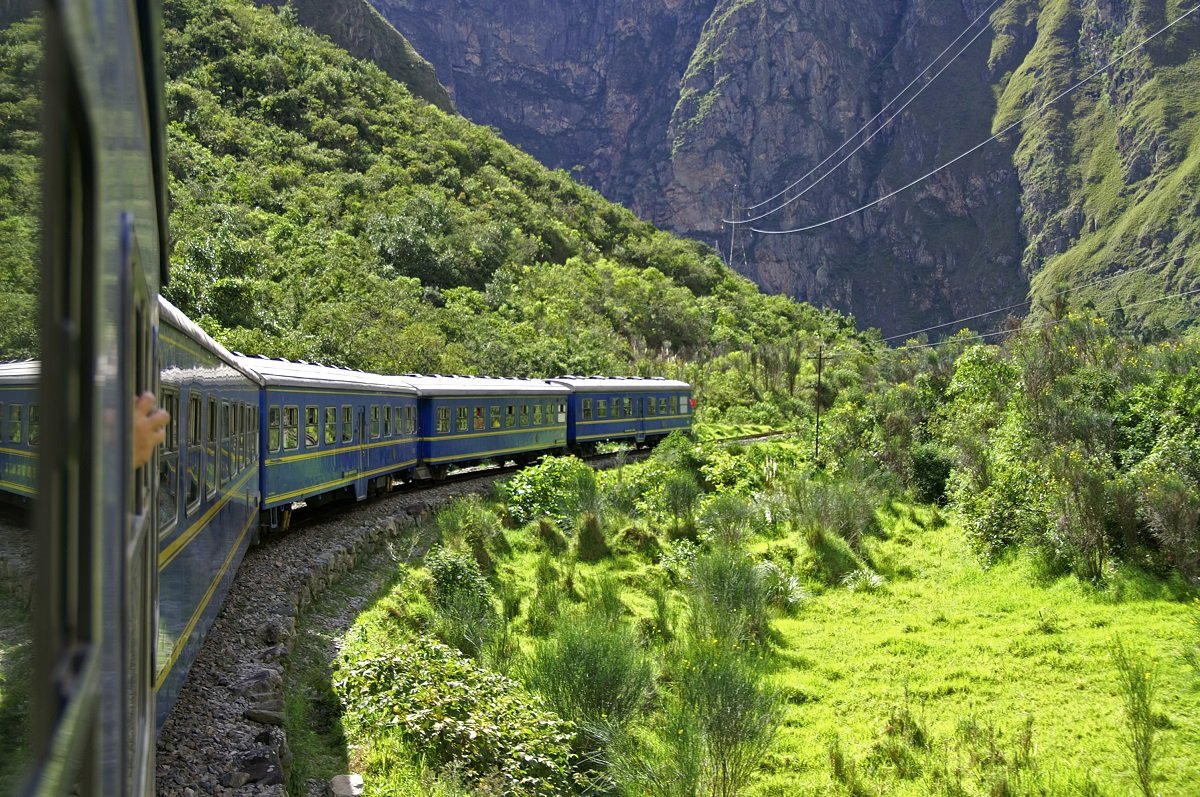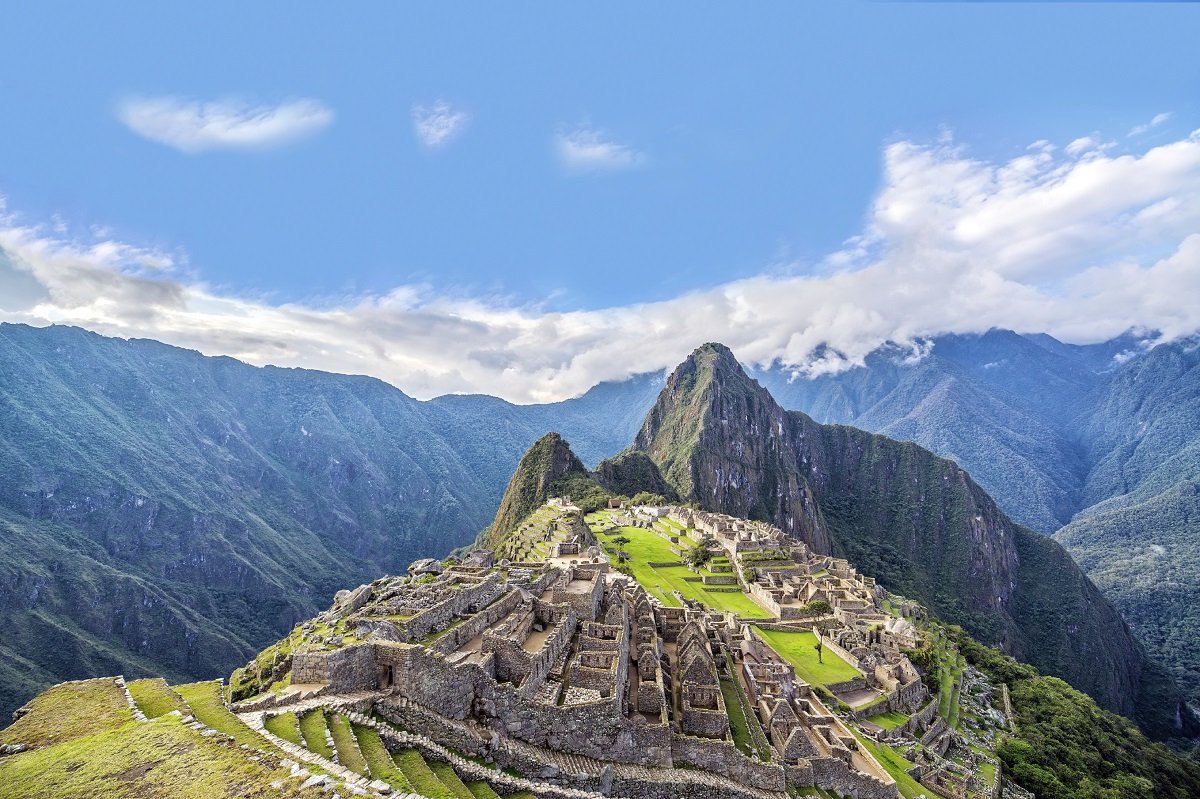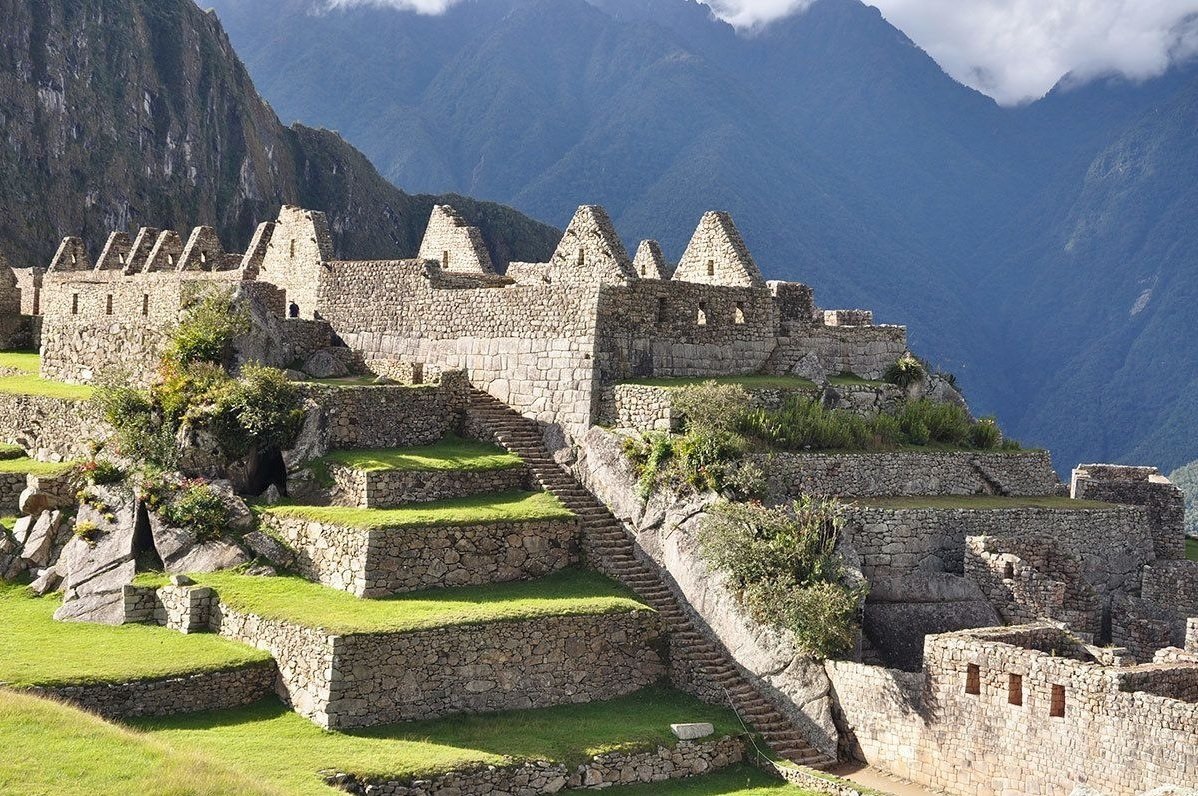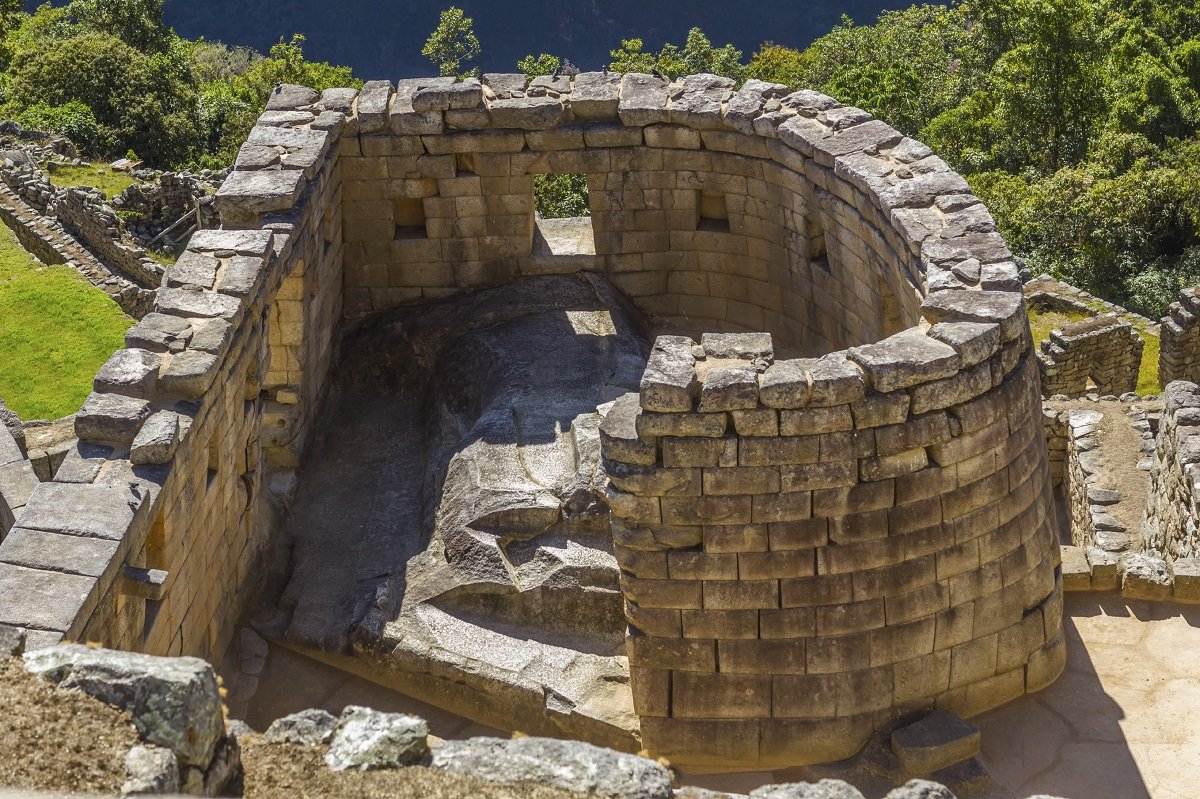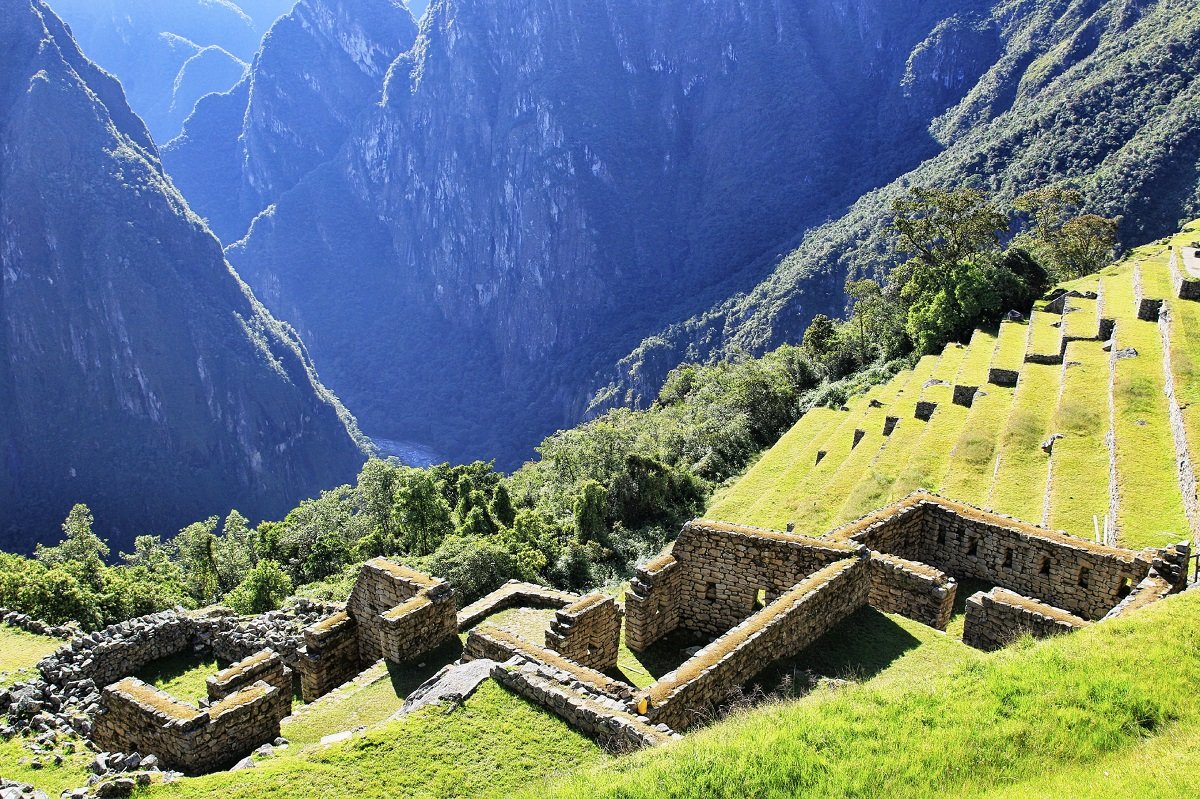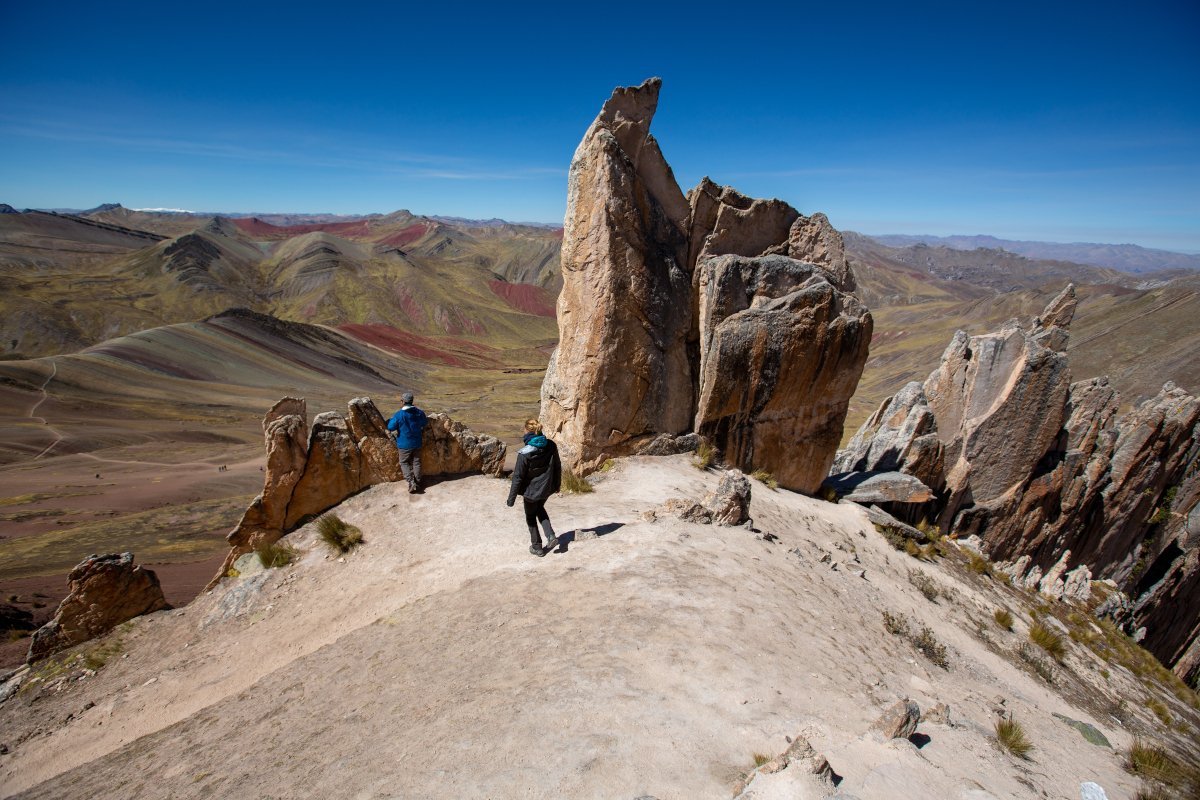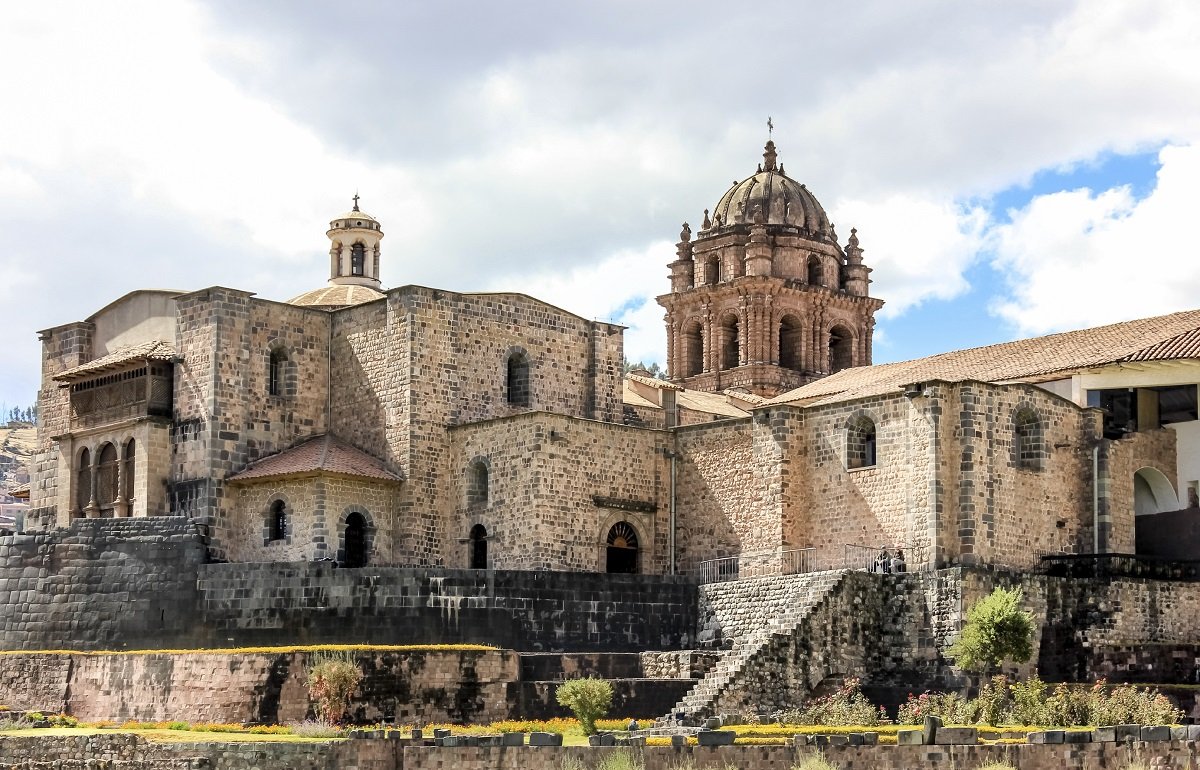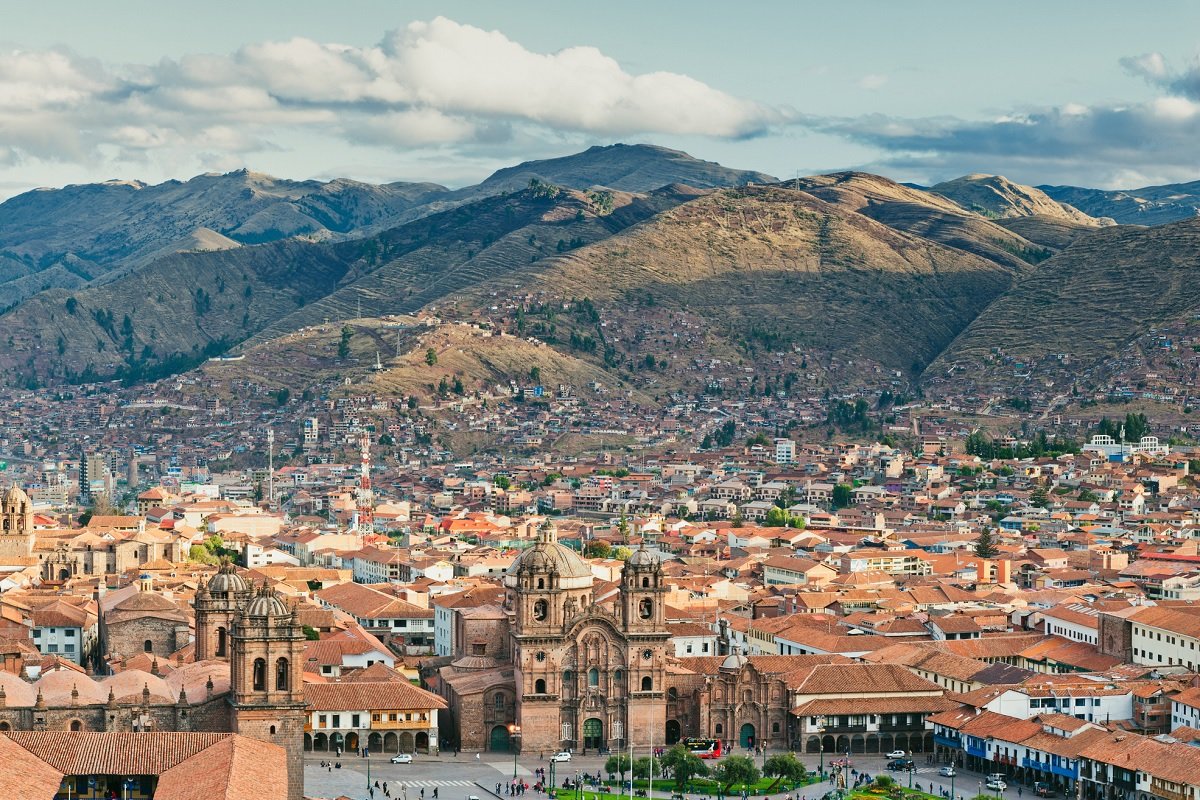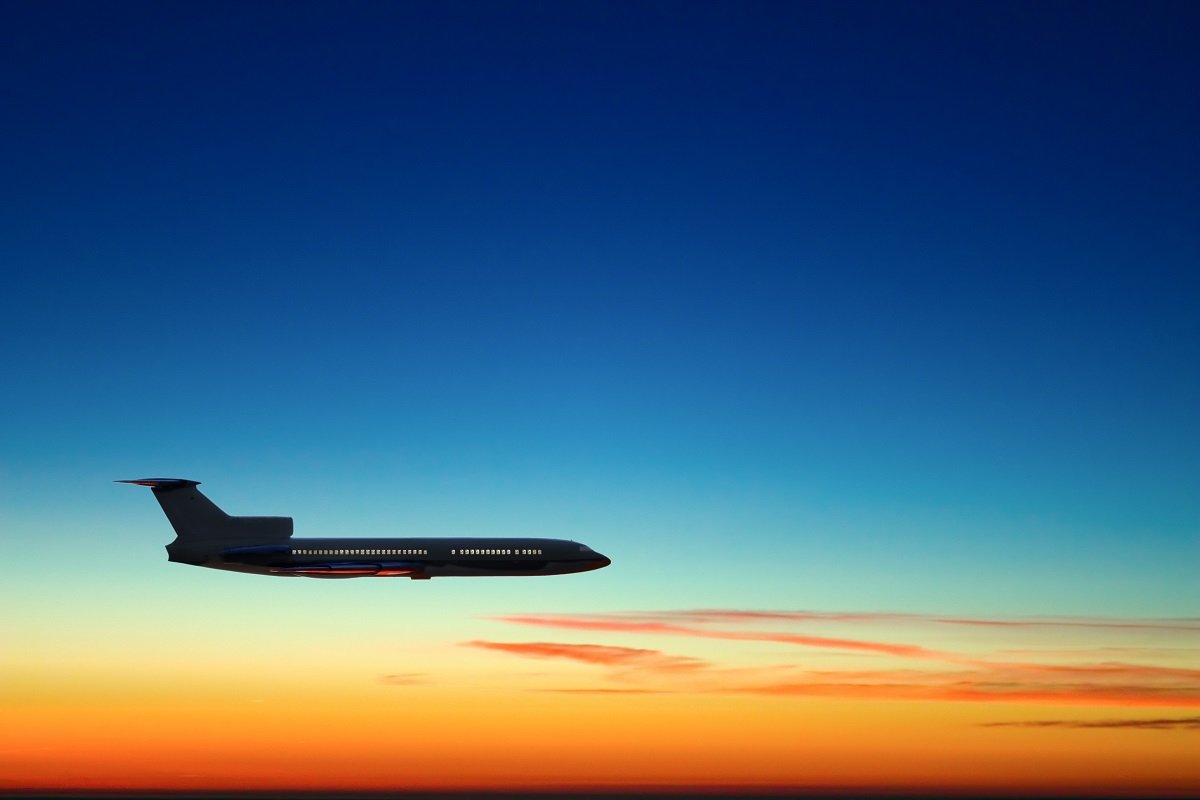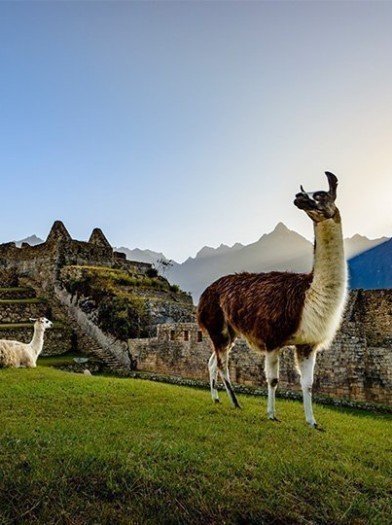Confidence Guarantee - Read more
16 days
Ballestas, Nazca & Inca culture
Look forward to experiencing the mysterious Nazca Lines, the wildlife of the Ballestas Islands, the deep Colca Canyon, the indigenous communities of Lake Titicaca and the Machu Picchu Inca ruins.
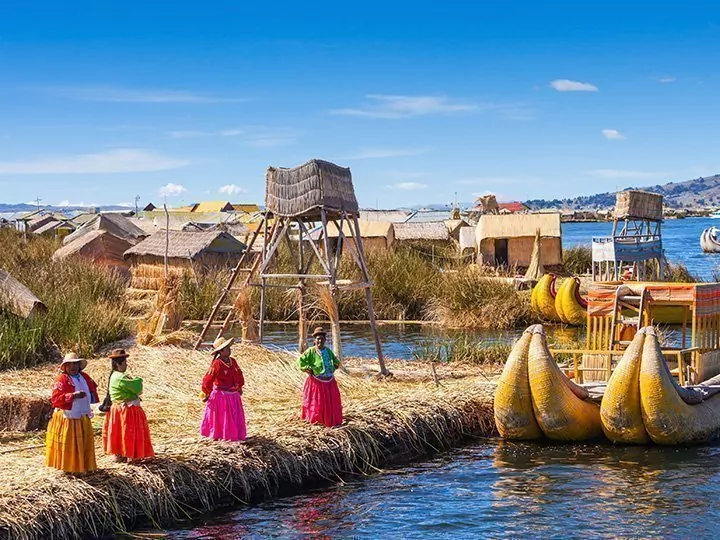
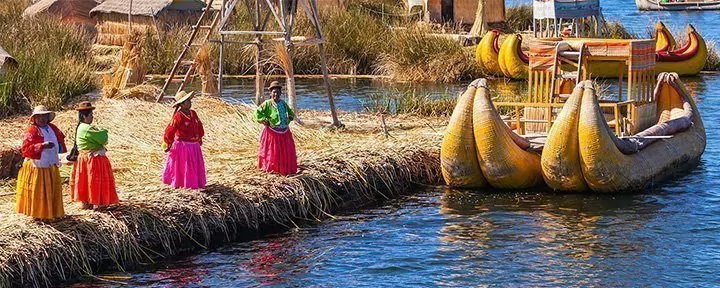
16 days
Ballestas, Nazca & Inca culture
Look forward to experiencing the mysterious Nazca Lines, the wildlife of the Ballestas Islands, the deep Colca Canyon, the indigenous communities of Lake Titicaca and the Machu Picchu Inca ruins.
What is included in the price?
This package includes the following
- Flights from the UK to Lima (enquire regarding direct flights)
- Flights from Cusco to the UK
- Transfers from and to the airports (in small, international groups)
- Coach travel: Lima – Paracas – Nazca – Arequipa – Colca Canyon – Puno – Cusco
- Train travel: Return trip, Cusco – Aguas Calientes
- 14 nights’ accommodation in good hotels incl. breakfast
- 3 x lunch (days 6, 8, 9)
- Individual round trip, although all excursions are in small international groups with local, English-speaking guides
- ATOL certificate included
- Emergency hotline staffed 24/7 throughout your trip
- Possibility of daily departure
- Departure guarantee – The price is valid when at least 2 people travelling. Please ask for a price if you are travelling alone
Comprehensive package of excursions:
- Half-day tour of Lima, including a visit to the Larco Museum
- Sailing trip to the Ballestas Islands
- Flight over the Nazca lines
- Half-day tour of Arequipa, including a visit to the Santa Catalina Monastery
- Two-day visit to Colca Canyon – famous for its condors, thermal baths and ancient agricultural terraces
- Full-day trip to Lake Titicaca and the islands of Uros and Taquile
- Half-day tour of Cusco and the surrounding area
- Full-day trip to The Sacred Valley
- Guided tour at Machu Picchu
- Admission to the attractions mentioned
THE TOUR IN SHORT
Peru is a magnificent country to travel in and explore. Your visit starts in Lima, the capital city, and continues on to the Ballestas Islands – also known as the ‘mini-Galápagos’ – where you can admire curving rock formations, blue-footed boobies, penguins and sea lions. It is also just off this group of islands that you can see La Candelabre on the Paracas peninsula. One of the absolute highlights of this trip is the chance to see the world-famous Nazca lines, which can only be viewed from the air. There will also be time to visit ‘The White City’ of Arequipa and the deep and intriguing Colca Canyon. On the highest lake in the world – Lake Titicaca – you will have the chance to meet the local people and find out more about their culture and everyday life. Of course, no trip to Peru would be complete without experiencing Cusco, the ancient and elegant capital of the Inca Empire, and The Sacred Valley, including a visit to the museum town of Ollantaytambo and the town of Pisac, famous for its Indian markets and impressive ruins. Yet another highlight is the world-famous ruin complex of Machu Picchu, where you can enjoy an enchanting view of the high mountains and cloud forest before making your way back to Cusco, which marks the start of your journey home.
Why choose this tour
- Go on a scenic flight and experience the mystical Nazca Lines from above
- Meet unique animal life including sea lions, penguins and blue-footed boobies at the Islas Ballestas islands
- Look forward to encountering the Inca’s history and fantastic constructions in Cusco and of course, Machu Picchu
- Enjoy the fantastic nature of the Andes Mountains and see the beautiful condor in Colca Canyon
Our prices always include
- All international and domestic flights
- All destination transfers
- All specified excursions and activities
- All accommodations
Detailed Itinerary
Day 1:
Departure from the UK and arrival in Lima
Departure day, where you will fly to Peru, with connecting flights along the way. You will land at Lima Airport, where you will be met by a representative of our partner in Peru, who will accompany you to your hotel. The journey from the airport to the hotel takes around 1 hour and on the route your guide will answer any questions you may have regarding your trip. The rest of the day is yours to do with as you wish.
Day 2:
Tour of Lima
The day starts with a half-day tour of the Peruvian capital city, which was founded in 1535 by Francisco Pizarro. The itinerary will take you to the magnificent, bustling central square called Plaza Mayor, which is decorated with rose gardens, tall palm trees and a famous fountain capped with a representation of the city’s guardian angel. The square is lined with beautiful buildings in colonial style, including the Presidential Palace, the Archbishop’s Palace and the city’s impressive cathedral which dates back to 1555 and contains the earthly remains of Pizarro himself. You will then have the chance to visit the San Francisco Monastery and its church from 1674 – which happens to be the most attractive Baroque church in the city. The monastery is decorated with delightful mosaic tiles from Seville and fresco paintings that were rediscovered when an earthquake destroyed parts of the outer wall. Particularly worthy of note are the monastery’s museum of religious art, the library of more than 25,000 books, and the catacombs beneath the church.
Next stop on the itinerary is the San Isidro district, with its attractive parks, and the modern Miraflores quarter, with its fine beaches, gardens and squares, as well as charming cafés and restaurants.
The guided tour rounds off with a visit to the Larco Museum, one of Lima’s best-known museums. Dedicated to pre-Columbian art, it houses an extensive collection of intriguing objects from various pre-Columbian cultures, including Moche, Nazca, Chimú and Inca.
The late afternoon and evening are yours to do with as you wish.
However, it would be a good idea to have an early night, as you will be continuing on your way early in the morning.
Day 3:
Bus from Lima to Paracas – boat trip to the islands, Islas Ballestas – bus to Nazca
Bright and early in the morning, you will be picked up from the hotel and driven to the bus station in Lima. From here, you will head south to Paracas, where you will experience the wildlife of the Ballestas Islands. The drive from Lima takes approximately 4 hours, so you can lean back in your chair and have a snooze.
Islas Ballestas offers outstanding wildlife, earning it the nickname “Mini Galapagos”. The archipelago consists mainly of cliffs eroded by the sea to form beautiful rock formations.
The archipelago is the country’s most important bird and marine reserve and has a sizeable population of seabirds including cormorants, seagulls and the blue-footed booby, which is also found on Galapagos. Sea lions, which occasionally swim close to the boats, and Humboldt penguins, carried from Antarctica by the powerful Humboldt Current, can also be spotted on the islands. Landing on the islands is not allowed as they are protected, but the boat trip allows you to see the animals right up close.
You will also see “La Candelabra” from the boat, on the northernmost point of the Paracas peninsula. La Candelabra is a huge geoglyph in the dry desert sand, depicting a three-armed candelabra or a cactus, which was a symbol of power in the Chavin culture. It is not known who created the geoglyph or what purpose it had.
After the trip to Islas Ballestas, you hop back on the bus and drive towards Nazca where you arrive late afternoon and are driven to your hotel. The drive to Nazca also takes about 4 hours.
Distance: Lima – Paracas – Nazca approx. 460 km
Transport time: around 8 hours
Day 4:
Flight over the Nazca lines – bus to Arequipa (2,335 metres)
The small town of Nazca is like a lush green oasis surrounded by desert and high dunes. The town features on the international map due to its mysterious geoglyphs of animals and geometric figures in the desert sand. The figures have been there for more than 2,000 years and have not been erased by weather or wind due to the minimal rainfall in the area.
There are many theories about the purpose of the Lines, but archaeologists and other researchers are not yet in full agreement about their function.
As the figures are best seen from above, you will be going on a short flight over the impressive lines to give you an impression of the scale of them. Look forward to seeing some of the most famous figures which, among other things, depict an “astronaut”, a giant lizard, a hummingbird, a monkey, a spider and a condor with a 130-metre wingspan.
After viewing this amazing sight, you return to terra firma and are driven to the bus station where you board the bus to the beautiful colonial city of Arequipa. It’s a long drive to Arequipa, giving you a good sense of just how big the country is. Arequipa is located in the Andes at an altitude of almost 2,400 metres, with the volcanoes Misti (5,822 m), Chachani (6,057 m) and Pichu-Pichu (5,669 m) as a beautiful backdrop.
On your arrival in Arequipa, you will be picked up and driven to your hotel.
Please note: Flights over the Nazca Lines may be cancelled by the Peruvian authorities in poor weather. However, this is rare.
Distance: Nazca – Arequipa approx. 567 km
Transport time: Approx. 10-11 hours
Day 5:
Guided tour of Arequipa (2,335 metres)
Arequipa is almost exclusively built of white volcanic rock, hence its nickname “The White City”.
Today, you’re going on an interesting guided tour of the city, on which you’ll experience the highlights of Arequipa. On the tour, you’ll see the many stately mansions and colonial buildings from the 18th century with their carved doors, French windows and cosy courtyards. You will also visit the central square, Plaza de Armas, with its palm trees, old gas lanterns, fountains and, of course, the city’s huge cathedral. The city is almost exclusively built of white volcanic rock, hence its nickname “The White City”.
You’ll then visit Arequipa’s biggest attraction, the Santa Catalina Monastery, which once housed more than 400 nuns. Santa Catalina was founded in 1580 by a rich widow named Maria de Guzmán. It was primarily aimed at the upper classes, for whom, during colonial times, it was customary for the family’s second child to serve the church. The girls were brought to the monastery at the age of three and never ventured outside the walls again.
The monastery has been hit several times by earthquakes but has been rebuilt in its original style, and the historic buildings still stand to this day. Although the monastery is open to the public today, there is still a small religious unit living at one end of the complex. Today, however, the nuns are free to receive visits and leave the Monastery of Santa Catalina whenever they want.
The last stop on the tour is Yanahuara Plaza, where you have every opportunity to take some beautiful pictures of the city’s breathtaking volcanic surroundings.
You have the evening to yourself in Arequipa.
Day 6:
Bus ride from Arequipa to Chivay in Colca Canyon (3,650 metres)
Early morning, you head for the fascinating Colca Colca Canyon. Around 3,400 metres deep, the canyon is one of the deepest in the world. By comparison, it is around twice as deep as the Grand Canyon in the US.
You’ll cross the spectacular Altiplano plateau, which is characterised by its dry, barren landscape with vast open expanses where you can spot grazing llamas and alpacas. You really get to experience the mighty Andes Mountains on this tour, and in several places, you’ll be driving at an altitude of over 4,000 metres. The highest pass and vantage point on the route is called Mirador de los volcanes, and on a clear day, you have a fantastic view from here of the surrounding volcanoes. The vantage point is located at an altitude of around 4,900 metres, and you’ll notice immediately that the thin air at this altitude affects your breathing. So, it will just be a brief stop to take photos before continuing down towards the town of Chivay, which serves as the entrance to Colca Canyon.
In the afternoon, it’s time for a spot of pampering with a visit to Chivay’s thermal baths, which are naturally heated by the volcanic activity in the area. Chivay is surrounded by the volcanoes Sabancaya (5,976 metres) and Ampato (6,288 metres).
Distance: Approx. 167 km
Transport time: around 4 hours
Day 7:
Excursion to Colca Canyon - bus to Puno (3,827 metres)
After this breathtaking nature experience, you’ll go for a short walk in the valley, where you’ll discover the ancient agricultural terraces that have been in use for centuries. There will also be ample opportunity to buy a colourful souvenir to take home with you. You then drive back to Chivay for lunch before boarding the bus to Puno.
Puno is located on Lake Titicaca, which is the largest lake in South America and the highest navigable lake in the world. The city was of great historical significance to the Incas. It was here that the first Inca, Manco Capac, rose from the waters of Lake Titicaca to start the Inca Empire, becoming the first king of Cusco. Today, Puno is an agricultural city specialising in the breeding of llamas and alpacas, so wool products can be bought here at a good price.
Distance: Chivay – Cruz del Condor return + Chivay – Puno: Approx. 385 km
Transport time: around 9 hours
Day 8:
Excursion at Lake Titicaca (3,810 metres)
Today, you’re going on a full day excursion to Lake Titicaca, which Peru and Bolivia share. Here, an exciting encounter with two very different highland Indian communities, where old traditions are still maintained, awaits you.
You start by sailing out of the harbour to the floating reed islands, Islas Uros, which are still inhabited by the Uros people. The Uros use the lake’s strong totora reeds to build islands, houses and boats. Despite the islands having become a little commercial, it’s still fascinating to learn about the culture and ancient traditions of the Uros people and not least to see their impressive craftsmanship.
You then sail on to the island of Taquile, which is known especially for its colourful crafts and its “knitting men”. Here on the island, it’s the men who knit – and they’re good at it! The pattern on a man’s hat, called a chullo, not only shows his creativity, but his civilian status, too. It’s women’s job to spin the yarn and weave. The women weave the beautiful belts for the men’s costumes. Their craftsmanship is considered some of the finest in the entire country.
Together with your guide, you walk up to the highest point of the island, from which there is a breathtaking view of Lake Titicaca, with high mountains in the background.
Before heading back to Puno, you enjoy a traditional lunch at a cosy restaurant, and there’s also time to go exploring on your own and perhaps buy a beautiful souvenir to take home with you.
Once back in Puno, you have the rest of the afternoon and evening to yourself.
Day 9:
Bus ride from Puno to Cusco (3,400 metres)
Get ready for a long but eventful day! You will be picked up from your hotel and driven to the bus station, where a coach is waiting to take you to Cusco, which was once the official capital of the Inca Empire, and is now an elegant, thriving and multicultural city.
En route, you will cross Altiplano, where you may well see some vicuñas, an animal that is related to the camel but looks more like a lama or alpaca. The coach will make several stops along the way, so you can take part in guided tours of various ruins and monuments. The first stop is at the Pukara pyramid: the hugely impressive step pyramid that was built by the people of Pukara 3,500 years ago. The coach will subsequently take you over La Raya – the highest point on the route at 4,319 metres above sea level – before descending into a beautiful valley used to cultivate a variety of crops including corn and potatoes. You will then arrive in Raqchi, where you can view the ruins of Viracocha Temple, one of the most sacred sites of all to the Incas. The last stop before Cusco is at the famous colonial age church Andahuaylillas, better known as the ‘Sistine Chapel of the Americas’ on account of its magnificent painted ceilings and other fine art.
On arriving in Cusco, you will have time to check into your hotel before spending the evening exploring the city and its excellent restaurants.
Distance: Approx. 390 km
Transport time: Approx. 10 hours incl. stops
Day 10:
Guided tour of Cusco (3,400 metres)
There is nothing scheduled for today until the afternoon, when a guided tour of Cusco and its surroundings has been arranged. You start at the city’s central square – the Plaza de Armas, which was known as Hucaypata or ‘The Warriors’ Square’ during the age of the Incas. It was here that many of the most important events in the history of Cusco took place.
This is also where you will find Cusco Cathedral, built of stone from the Sacsayhuamán Inca complex on top of the Inca Viracocha Palace during the colonial era. The cathedral is therefore a wonderful mix of Spanish Renaissance architecture and the Incas’ masterful stone masonry. The street next to the cathedral leads to Santo Domingo Church, which is built on top of what was once one of the most important temples of the Inca empire, Koricancha. The magnificent earlier sun temple forms the foundation of the church and is built without the aid of mortar, with each stone fitting perfectly instead.
Next on the itinerary is Kenko, another sacred Inca site marked with a 5-metre-high stone block which is said to resemble a puma. This site is dedicated to the worship of Mother Earth and features water channels carved in solid rock and a subterranean room. Farther along the road stands a small fortress called Puka Pukara, which is believed to have been used to guard the road and the Sacred Valley of the Incas. Here you will see terraces carved into the side of the mountain, as well as steps, tunnels and towers. Continuing north, you will come to Tambomachay, a sacred bathing site for the Inca conquerors and women of the royal household The system is a masterpiece of construction, and is still able to deliver water to this day.
The last stop on the tour is the military complex of Sacsayhuaman, which enjoys a magnificent location with a wonderful view out over Cusco. Sacsayhuaman is a fascinating example of the architectural skill of the Incas. It is an impressive construction, with double walls of carved granite, where the heaviest block weighs more than 125 tonnes.
After the tour, you will return to Cusco where the evening is yours to do with as you wish.
Day 11:
Excursion to the Sacred Valley (approx. 2,800 - 3,400 metres)
The day is devoted to an excursion to Urubamba Valley, The Sacred Valley of the Incas. Your first stop is at Pisac, renowned far and wide for its Indian markets, where you will have the chance to buy everything from Peruvian wool sweaters and musical instruments, to paintings, tapestries and jewellery. The town is also well-known for the impressive ruins nearby. The ruined buildings were constructed of smaller stones than those used in Sacsayhuaman, but the precision with which they have been carved and sized is hugely impressive – just like the view.
After lunch, you will continue on your way to Ollantaytambo, another charming village in the heart of the valley, which is considered to be an open air museum, in that all residents observe the old traditions and laws that can be traced back to the their earliest forefathers. The town is probably best known for the complex of the same name, which comprises temples, baths and impressive military installations.
You will then return to Cusco, where the rest of the day is yours to do with as you wish.
Distance: Approx. 160 km
Transport time: Approx. 10 hours incl. stops
Day 12:
Bus/train from Cusco to Aguas Calientes (2,040 metres)
This morning, you will be picked up from your hotel and driven to the station to catch the train to Aguas Calientes – a journey of around 3 hours. Aguas Calientes is a small town located near the cloud forest and close to Machu Picchu, the world-famous complex of ruins. On arrival, a bus will take you to your hotel, and the rest of the day is yours to do with as you wish.
Distance: Approx. 125 km
Transport time: Cusco – Aguas Calientes (bus + train): around 4 hours
Day 13:
Visit to the Inca ruin, Machu Picchu – Train/bus back to Cusco (3,400 metres)
Early in the morning, you will be picked up from your hotel and driven to one of the absolute highlights of your trip: the fantastic ruins of Machu Picchu, which have been designated one of the wonders of the modern world. The ruins stand enchantingly on a steep and verdant ridge of hills in the Urubamba Valley, surrounded by cloud forest and green hilltops, with snow-capped mountains far off in the distance. Here, you will be given a guided tour of the area and can experience the narrow terraces on the steep mountain sides, as well as areas containing burial sites, prisons, small residences and temples.
It is said that Machu Picchu was rediscovered by the American explorer Hiram Bingham on 24 July 1911. This is not strictly true, but he is certainly responsible for spreading the news of this truly remarkable place to all corners of the globe. The Inca city was built in around 1462 – i.e. during the Golden Age of the Inca Empire – but was abandoned less than a century later, probably on account of a smallpox epidemic. As Machu Picchu was never discovered and plundered by the Spanish invaders, it retains major cultural significance and is considered a sacred site. Machu Picchu was home to priests, highly ranked civil servants, craftsmen, servants and virgins selected to devote their lives to the Sun God. It was a city with streets, aqueducts – which still carry water to this day – fountains and walkways, and it fulfilled a variety of religious functions.
After a guided tour, you will have time to explore the area on your own.
You spend the afternoon on your own in Aguas Calientes, where you can enjoy your lunch and possibly a visit to the thermal baths, also called hot springs, and relax in the naturally heated water. Remember to bring a bathing suit. These hot springs lend their name to the town Aguas Calientes, which means hot water.
Your train back to Cusco leaves late in the afternoon. Your guide will let you know the exact time after the Machu Picchu tour.
On your arrival in Cusco, you will be driven back to your hotel.
Distance: Approx. 125 km
Transport time: Aguas Calientes – Cusco (train + bus): around 4 hours
Accommodation:
Optional tours:
Day 14:
Cusco on your own (3,400 metres)
Today, there are no planned excursions, so the day is at your disposal. Perhaps you would like to head out and buy some final souvenirs, or just take a stroll around this gorgeous, historical city.
If you would like to experience even more of the magical Andes Mountains, we recommend purchasing an excursion to the magnificent Rainbow Mountain. This mountain is just one of the many beautiful, rainbow-coloured mountains just outside of Cusco, whose colours are due to the mountains’ combination of colourful minerals. It is a truly unique experience to see a mountain in so many wonderful colours.
We also offer an excursion to the Inca ruins at Moray and the salt mines in Maras, or how about trying your hand at a small cookery class where you gain an exciting insight into Peruvian cuisine?
Day 15:
Return flight
You will be picked up from your hotel and driven to the airport to catch your flight to the UK, which will feature connecting flights along the way.
Day 16:
Return trip
Arrive back in the UK after a wonderfully eventful holiday.
|
|
When would you like to travel?
Departure dates
All prices shown are per person
Please note that the price of a single room only applies when for at least two people. Please contact us if you’re travelling alone.
Special offers for groups of 6 or more. Request a quote today for more info.
Special offers for groups of 6 or more. Request a quote today for more info.
REVIEWS
Travellers' tales
BEFORE YOU TRAVEL
Good to know
Latin America

Emily Roper
Emily loves to travel and is extremely passionate about helping others achieve their travel dreams.
Opening hours
Monday-Thursday 9-15Friday 9-13
WHY TRAVEL WITH TOURCOMPASS?
Why people choose us
- Personal service by travel experts with first-hand knowledge
- Dedicated booking team ensures a smooth journey
- 24/7 assistance while on tour
- Well-planned itineraries with thoughtfully selected highlights
- All tours include flights, transfers and accommodations
- Various options available to tailor your tour
- Accommodation in great locations
- Carefully selected local guides with comprehensive knowledge
- Favoured by thousands of guests since 2006
- All tours tried and quality checked by our own team
- Long-term relationships with an extensive network of partners
- We guarantee you the best prices
- Excellent working relationships with our partners ensure the best quality and prices
- We optimise our logistics and processes so you only pay for what matters the most
- ATOL protected
- Member of ABTA
- Personal liability insurance
